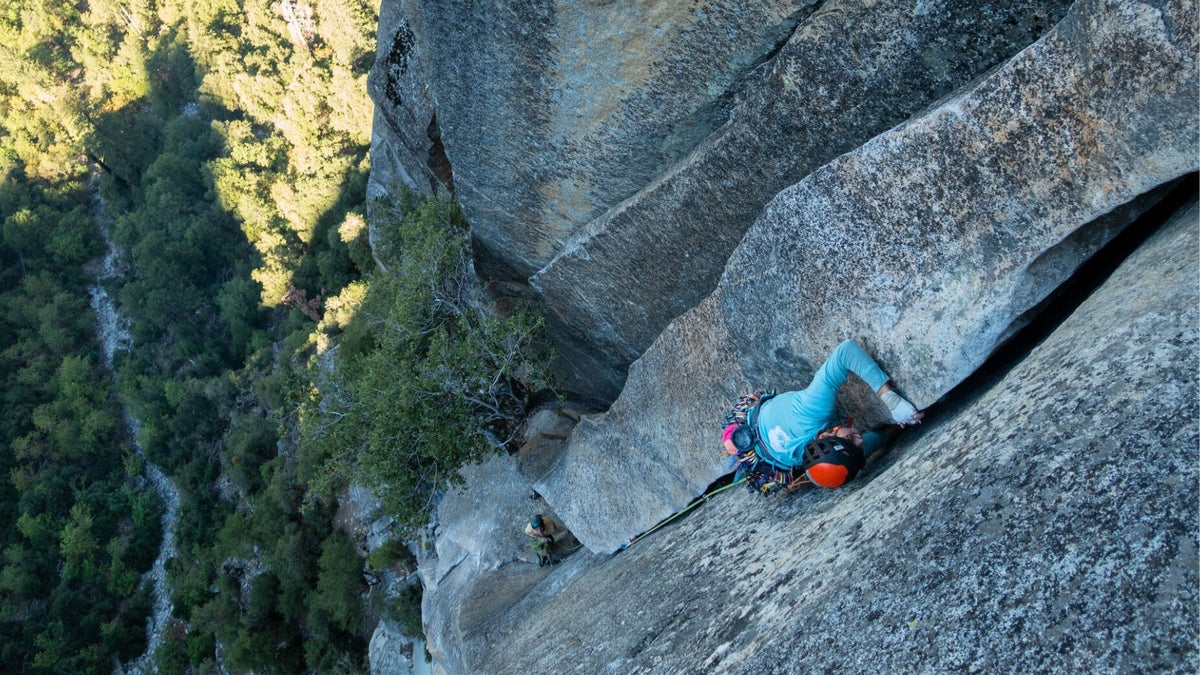
Traveling to another country? Want to avoid sandbagging yourself? Hint: 5.8 and 8a are very different…
The post International Climbing Grades: Everything You Need to Know appeared first on Climbing.
]]>
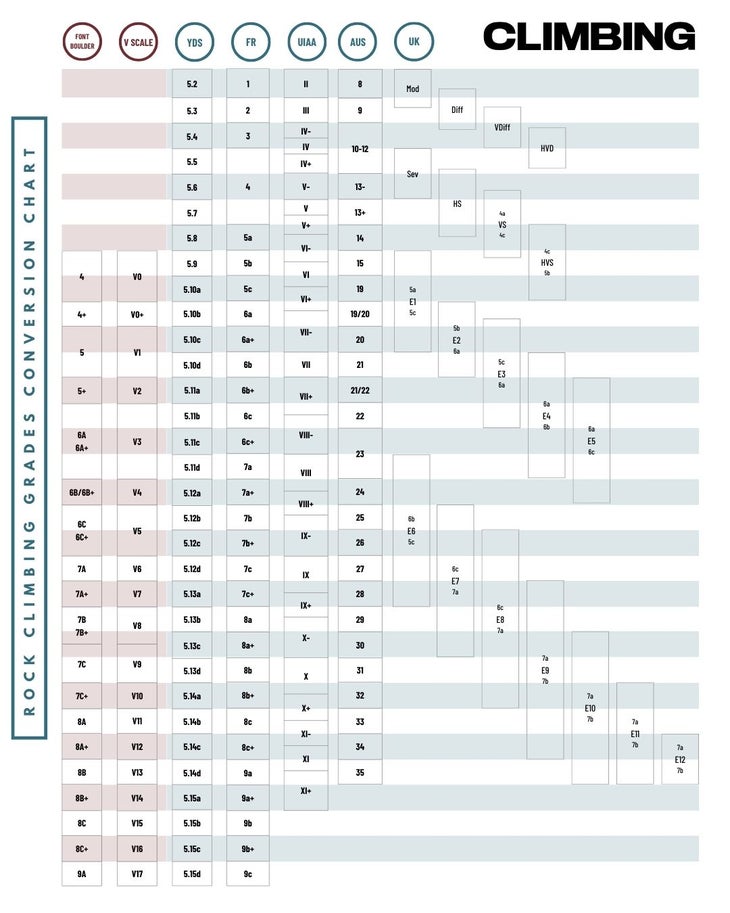
Yosemite Decimal System
The Yosemite Decimal System (YDS) evolved from a rating system that was originally designed to give hikers and scramblers a clear rating of difficulty from off-trail walking to hands-on rock climbing. Class 1 referred to a flat or slightly uneven walk, while Class 5 described a steep, challenging rock climb that should only be attempted with a rope and protection. Climbers eventually added a decimal to Class 5 ratings (5.8, 5.9) to better describe the difficulty of climbing within. Be aware: up until the early 1960s, the highest formal Class 5 grade was 5.9. This does not mean climbers in 1950 were unable to climb harder than that! They simply hadn’t thought of a way to express difficulty beyond 5.9. As a result, some “5.9” climbs first done in the ‘50s are being retroactively graded 5.10 or even 5.11.
Nowadays, climbers use double-digit decimal grades to illustrate higher difficulty (5.10), and often add a letter from a-d for even further clarity (5.10a, 5.10b). The YDS is an open-ended grading system and currently tops out at 5.15d.
North American Commitment Grade
North American Commitment Grades take into account both the crux technical difficulties of a climb and its seriousness and/or remoteness. For example: El Capitan’s Free Rider (5.13a; 3,000ft), in the very accessible Yosemite Valley, and the North Howser Tower’s All Along the Watchtower (5.12-; 3,000ft), in the far less accessible Bugaboos, both receive “Grade VI” commitment. The former is more technically difficult while the latter is overall a more serious endeavor due to the alpine environment, lack of fixed anchors, and complex approach and descent.
- I/II: Half a day for the fifth class portion of the route.
- III: Most of a day of fifth class climbing.
- IV: A full day of fifth class climbing.
- V: Can only be done in a day if climbing very quickly with intention. Otherwise, it requires a bivouac on route.
- VI: Two-plus days of climbing, or speed-climbing tactics.
- VII: Remote walls, typically Himalayan. The largest routes on Earth.
French Alpine System
Like the North American Commitment Grade, the French Alpine System presents a grade which factors in the route’s overall “seriousness”; everything from the length and difficulty of the approach, the crux climbing, complexity of descent, objective hazard, altitude, and commitment level (i.e. how easy is it to rappel the route?).
- F: Facile/easy. Rocky scrambling or low-angle snow slopes and simple glacier travel.
- PD: Peu Difficile/a little difficult. Some technical climbing (rock scrambling or easy ice climbing) and possibly complex glacier travel.
- AD: Assez Difficile/fairly hard. Steeper rock or ice climbing, or long snow/ice slopes above 50 degrees.
- D: Difficile/difficult. Sustained, challenging rock/ice/snow climbing.
- TD: Très Difficile/very difficult. A long route, sometimes remote, with mainly technical climbing and perhaps poor protection or objective hazard.
- ED: Extrêmement difficile/extremely difficult. Often graded as ED1, ED2, ED3, these are the most serious alpine climbs imaginable with constant technical climbing from start to finish.
Aid Grades
Note: when the aid grade begins with a “C” (i.e. C2), that means the route can be climbed “cleanly” (without a piton hammer) to avoid damaging the rock with your hammer’s blows.
- A1: Simple aid. Every piece is solid and is easy to place.
- A2: Moderate aid. Every piece is solid, but it may be difficult to place (i.e. a clever nut placement, or a blind piton).
- A2+: Some pieces may not be trustworthy and could fail under bodyweight. Up to 10-meter fall potential. Clean falls.
- A3: Difficult aid. Many bodyweight-only placements in a row. Up to 15-meter fall potential.
- A3+: A3 difficulties but with dangerous fall potential (a ledge, or possible swing).
- A4: Hard, committing aid. Up to a 30-meter ledge-fall potential.
- A4+: Even more serious; more bodyweight placements that are even harder to sniff out.
- A5: Extreme aid. A full pitch of bodyweight-only placements.
Mixed Grades (M-Grade)
These routes are climbed using crampons and ice tools on rock features as well as on ice. When Mixed Grades were first introduced, it was all but a given that a “mixed” pitch would involve ice climbing—usually a hanging dagger—at some point. As mixed climbing has become more popular, the subset of “sport drytooling” has gained traction too: climbing bare rock, with ice climbing equipment, but with no actual ice in sight. These routes are prefaced with a “D” instead of “M.”
As a general rule in the more moderate M Grades, to ascertain how a mixed pitch will relate to a rock pitch, you can add four numbers to the Mixed Grade to get a comparable YDS grade (i.e. M4 = 5.8).
- M1-3: Easy. Low angle. A 5.7 climbing experience.
- M4: Slabby to vertical with some technical dry tooling.
- M5: Low angle dry tooling with brief overhangs, or sustained vertical dry tooling.
- M6: Vertical to overhanging with difficult dry tooling, or tenuous, insecure pick holds.
- M7: Overhanging, powerful, and technical dry tooling.
- M8: Large overhangs requiring powerful and technical dry tooling. Longer sections of sustained dry tooling.
- M9: Either continuously slightly overhanging with marginal or technical holds, or a juggy roof of several body lengths.
- M10: At least 10 meters of horizontal rock or 30 meters of overhanging dry tooling with powerful moves and few rests.
- M11-15: A ropelength of overhanging gymnastic climbing, or sustained cave climbing.
Water Ice and Alpine Ice Grades
Water ice grades are highly dynamic and a given route’s grade can change week to week and even day to day. In contrast, alpine ice does not form seasonally—it is glacial ice that exists year round—and as a result it is typically far denser, and predictable.
The WI acronym implies seasonal water ice while AI implies Alpine Ice and is typically easier than a WI grade with the same number (AI5 = WI4).
- WI1: Low angle ice. With good crampon balance, no tools are required.
- WI2: Sustained 60 degree ice with steeper bulges.
- WI3: Sustained 70 degree ice with possible long bulges of 80-90 degrees; reasonable rests and good stances for placing screws.
- WI4: Sustained 80 degree ice with sections of 90 degree ice broken up by rests.
- WI5: A ropelength of 85-90 degree ice offering infrequent stances to rest. Or a shorter pitch of thin or rotten ice with poor protection.
- WI6: A ropelength of 90 degree ice with no rests, or a shorter pitch even more overhanging/tricky than WI5.
- WI6+: A ropelength of overhanging ice with no rests, or a shorter pitch even more overhanging/tricky than WI6.
- WI7: A controversial grade. Many ice climbers don’t believe WI7 really “exists.” However, a WI7 would theoretically be even more extreme than WI6: constantly overhanging, unstable ice columns/daggers, solid protection is nearly impossible to find.
Alaska Grades
Alaska Grades are, unsurprisingly, never applied outside of Alaska, but are nevertheless a popular grading choice in the area. Alaska Grades aim to encompass both the technical difficulties of a route in addition to the inherent remoteness and challenging weather (storms, extreme cold) that Alaska is known for.
- 1: A simple, glaciated mountaineering route.
- 2: Still non-technical, but climbers may be exposed to altitude, poor weather, and exposed walking/scrambling. (Think: Denali’s standard route: the West Buttress.)
- 3: Some technical climbing, but not sustained.
- 4: More technical climbing, often multiple pitches in a row. Potentially still straightforward to bail from.
- 5: Sustained technical climbing. Retreat would be difficult from high on the route.
- 6: Sustained technical climbing for thousands of vertical feet—good luck bailing. The hardest routes in Alaska.
Scottish Winter Grades
Like Alaska Grades, Scottish Winter Grades are region-specific. Scottish Winter Grades are often expressed with both a Roman numeral as well as an Arabic number. The Roman numeral provides an overall grade, and on routes below IV most climbers will just use that. Above IV, climbs will often receive a second, technical grade (the Arabic number) which describes the crux section. For North Americans unfamiliar with this system, a good rule of thumb is to subtract one from the Scottish Grade’s Arabic number to get the M-grade equivalent. For example: IX 9 is relatively well-protected M8 mixed climbing. IX 8 is more dangerous/runout M7.
- I: Snow gullies and low-angle rock ridges.
- II: Steeper gullies where two ice tools will likely be required for upward progress. Beware of steep cornice exits.
- III: Moderate rock routes, ice gullies, or steeper rock buttresses.
- IV: 60-70 degree ice with short, vertical steps; longer pitches up to 70 degrees; or mixed routes climbed with ice tools.
- V: Sustained ice to 80 degrees or mixed climbs with continuous technical moves. Protection may not always be solid.
- VI: Vertical ice and/or sustained, technical mixed routes.
- VII: Like VI, but longer, harder sections of technical climbing, and less frequent protection.
- VIII-XII: The hardest routes in Scotland.
Russian Grades
Note: the Roman numeral grades are UIAA technical ratings (see graph above).
- 1B: Hiking and scrambling, with a short, simple section of roped climbing.
- 2A: Several pitches of easy roped climbing.
- 2B: A multi-pitch route with II+ or III climbing.
- 3A: A multi-pitch route with one or more pitches of III climbing.
- 3B: A multi-pitch route with one or more pitches of III+/IV climbing. A full day.
- 4A: A full-day route with IV+ climbing.
- 4B: A full-day route with sustained IV+ climbing, or a section of V+.
- 5A: A long, technical route that may require 1-3 days to complete. Multiple pitches of V climbing.
- 5B: A long route that takes, at minimum, two days to complete. Some VI+ climbing.
- 6A and 6B: Multi-day routes with VI or harder climbing.
The post International Climbing Grades: Everything You Need to Know appeared first on Climbing.
]]>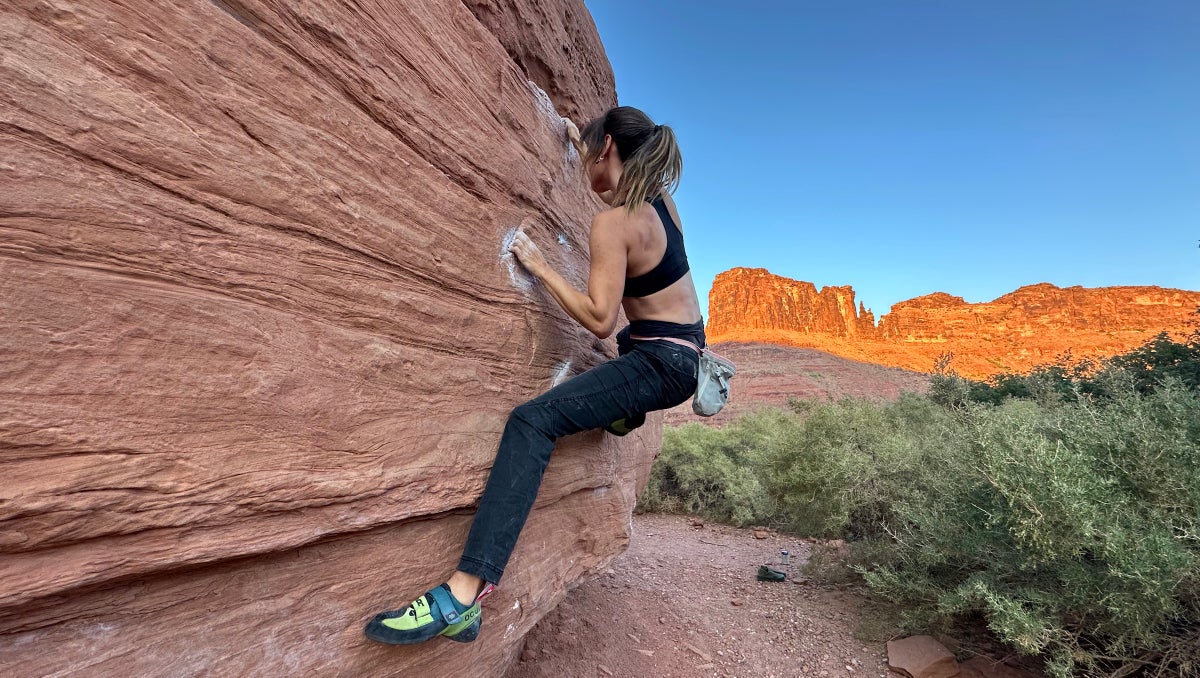
Our favorite pants and leggings for sport, bouldering, trad, the gym, and all-around climbing.
The post Of the 28 Pairs We Tested, These Women’s Climbing Pants Performed Best appeared first on Climbing.
]]>
We remember our early gumby days climbing in shorts, jeans, and other poorly chosen pants like it was yesterday. It also wasn’t long ago that climbing pants built for women left a lot to be desired. Thankfully, the pants scene has come a long way—and so have we. After climbing sport routes, trad lines, cracks, boulders, multi-pitch walls, and plastic at the gym, we know what we want in pants.
From movement-friendly design and under-harness comfort, to actually useful pockets, we evaluated over two dozen pairs of pants on a variety of climbs. We also included a mix of purpose-built climbing pants, more general outdoor pants, and leggings, for those who feel strongly that tights are the only way on rock.
Finally, if you’re looking for recommendations for both men and women, head over to this guide to the best climbing pants.
The post Of the 28 Pairs We Tested, These Women’s Climbing Pants Performed Best appeared first on Climbing.
]]>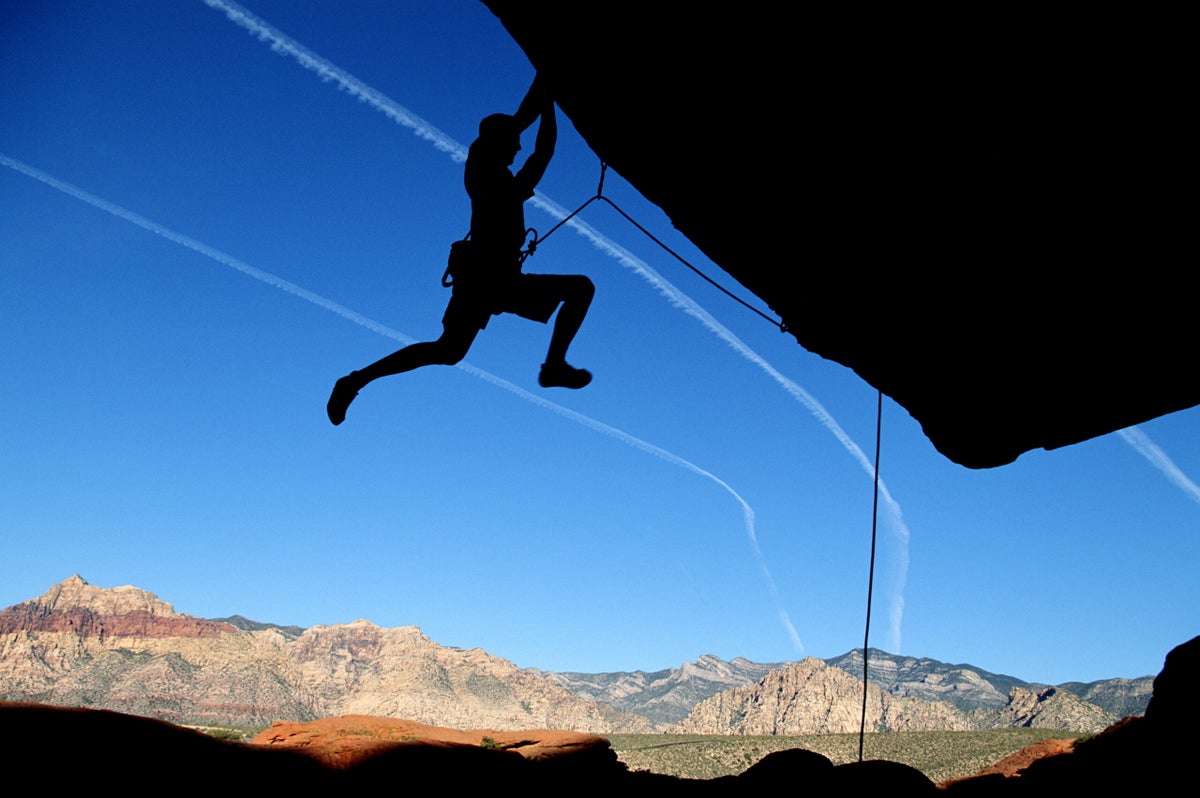
Don’t waste your time—or your life—on a partner who is reckless, irresponsible, or simply uncool to climb with.
The post Red Flags in a Belaytionship: 8 Signs You Need a New Partner appeared first on Climbing.
]]>
Most of us climb because it’s fun. If you’re climbing with a bad partner, that fun factor quickly diminishes or disappears. This is especially true if you feel unsafe. Whether they climb recklessly, don’t respect your judgement, or are more annoying than a hopelessly stuck nut, it may be time to break up the belaytionship.
Keep in mind that it’s never too late to decide it’s time to leave a climbing partner behind. Even if you’ve been climbing with someone for years, or if your partner happens to be your significant other or mentor, don’t be deterred from moving on if you don’t feel comfortable climbing with them anymore.
Climbing Partner Red Flags
1. Your climbing partner uses sketchy equipment—or uses equipment in a sketchy way.
Is there a clear core shot in their rope? Have you rolled up to the anchor with not a locker in sight? Do they scoff when you ask them to do a pre-climb partner check? Are their carabiners so worn that you could probably cut the rope with them?
First, try pointing out the gear issue you perceive. Perhaps they have some acceptable explanation you didn’t think of—or they simply didn’t realize there was an issue. If they are receptive to your gear critiques, turn it into a teachable moment so you can both climb more safely. But if they get defensive, brush off your concerns, or show up to the crag again next time with the same sketchy gear or usage patterns, then you might want to bail on the belaytionship.
Word to the wise: If their gear, knots, anchors, or belay device truly make you uncomfortable, end the climbing session.
2. They ignore your requests when you’re on belay.
It’s one thing to dish out a little encouragement or tough love when belaying someone who asks to come down. It’s another for your belayer to continuously push back on your commands as a climber. Maybe they mock you when you say “take,” refuse to keep it tight, or prod you up in an insensitive way when you ask to come down. If your belayer repeatedly disregards your commands when you’re climbing, you’re better off getting a catch from someone who listens to you and respects you.
3. When they’re belaying you, they’re not paying attention.
There’s nothing more annoying than calling down a command to your belayer only to find them staring off into the distance, chatting up the climbers next to them, or eating a sandwich. Good belayers pay attention. Great belayers treat the act of belaying like an actual job—not a distraction between their own send burns.
Signs that your belayer is paying attention? When you ask them to do something, they respond immediately. When you look down at them, they’re looking up at you. They rarely short-rope you on lead, they keep it tight on toprope, and they give a soft catch. Another unmistakable mark of an attentive belayer? Belay glasses.
4. They intentionally sandbag you—or themselves.
Has your climbing partner tried to pressure you to lead something above your comfort level or hop on an R-rated climb that you clearly weren’t ready for? Have they lied to you about the character of a route? If they think sandbagging you by omitting details or lying will help you improve—or worse, do this as a sort of twisted joke or hazing ritual—it’s time to say “catch you later” (literally).
(Note: This may have been the way of some mentors of yore. If you live in pursuit of a hard knock life on rock, then submit to the hazing and sandbagging all you want. But if it’s not your thing and your climbing partner habitually pushes you to the point of tears, find a more modern mentor.)
On the flip side, if your partner routinely offers to rope gun routes they have no business leading, you may start to feel unsafe as the belayer—especially if they outweigh you. If they take gruesome whips as often as they top out, and often have to bail mid-pitch leaving booty behind, it may be time to find a more level-headed partner.
5. They are a serial beta sprayer.
Some of us want the full beta spraydown. Others want to find their own way, even when they start struggling. If you’ve told your partner that you don’t want their beta, but they keep hollering up about your bad left foot or the jug you’re missing at three o’clock, say sayonara to the sprayer. Of course, give them a few chances. Maybe they didn’t hear you the first time. Remind them about your beta preferences, especially right before you climb. But if they keep at it, keep them out of your climbing life.
6. They did something that made you distrust them.
Did they almost lose control of the rope while lowering you? Did you notice that they often momentarily remove their hand from the brake strand while belaying you? Mid-climb, did they hook up their Grigri to a ground anchor so they could go get a beer from their truck without notice? (True story.) Trust serves as the foundation of every good belaytionship. And the moment you lose it, it’s hard to regain. If you no longer have trust in your partner’s skillset or judgement, stop climbing with them.
7. Decision-making feels like a one-way street, especially when it comes to risk tolerance.
All decisions in climbing should be consensual or at least negotiated from even playing fields. From where you’re climbing that day, to the routes you hop on, to who will take which pitch, to whether you’ll rappel or walk off, it’s important to talk over decisions together.
So how can you tell if your partner isn’t engaging in mutual decision-making? They pose rhetorical questions. Rather than proposing a plan, they inform you of it. And when you offer input or ask questions, they push back or try to convince you otherwise. Never let a partner exclude you from decision-making or pressure you into climbing decisions you’re not comfortable with.
8. They offer unsolicited critique, talk shit about your climbing, or make fun of you even after you’ve made it clear you’re not into it.
Every climber and belaytionship dynamic is different. If you’re climbing with a mentor or coach, you’re probably in the market for some constructive feedback. If you’re a shit talker, maybe you don’t mind being on the other end of a less-than-constructive observation. And if you’re a member of the r/climbingcirclejerk subreddit, then there’s a good chance you’re okay with being the butt in that intentionally unflattering butt shot—or the butt of your belayer’s joke. But if you continue to remain on the receiving end of these digs even after you’ve made it clear that you’re over it, give your partner notice and peace.
Note: If you’re scared to end a climbing partnership because of threats or pressure from your partner, please reach out for help. Your partner should never make you feel like leaving them will create negative consequences for you. Start by telling a friend or family member, or check out the resources at the new organization Never Solo, which is committed to preventing sexual abuse issues in the climbing community.
The post Red Flags in a Belaytionship: 8 Signs You Need a New Partner appeared first on Climbing.
]]>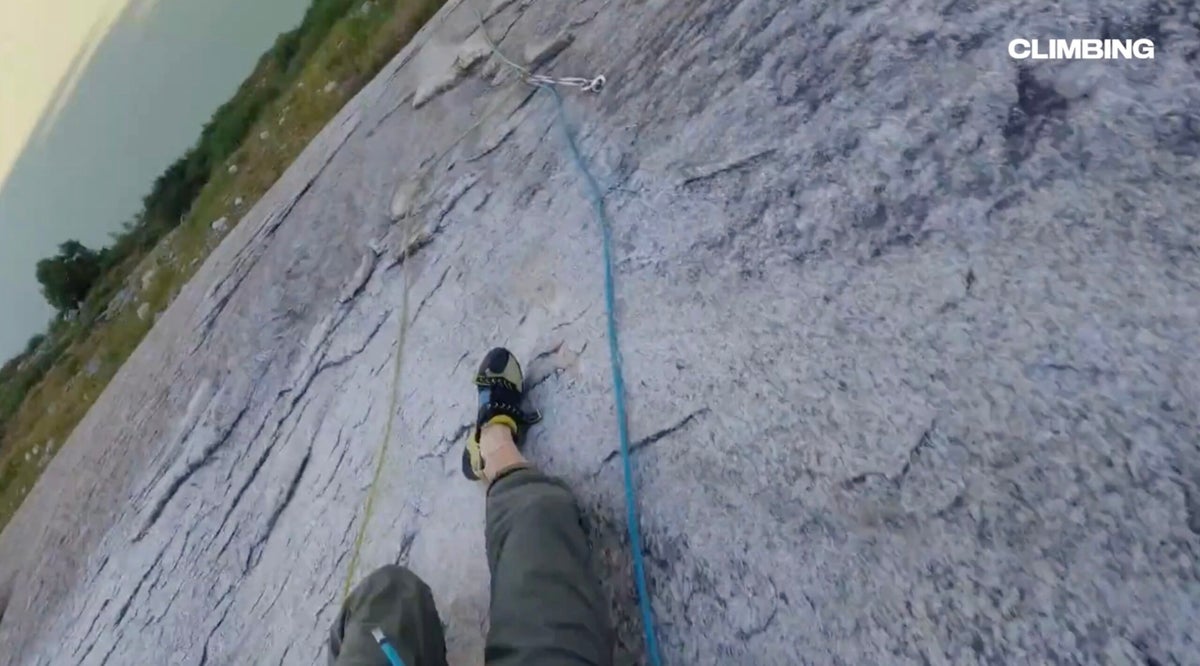
Thirty feet beyond your bolt? Above a cheese-grater slab? No thanks.
The post Weekend Whipper: A Slab Climber’s Worst Nightmare appeared first on Climbing.
]]>
Readers, please send us your Weekend Whipper videos using this form.
Are you planning to climb a runout slab this weekend? After watching this week’s whipper, you might think twice.
Earlier this month, Vincent Krause and a friend set out to climb Schweiz Plasir at Switzerland’s Grimselpass. “I was nearly at the belay of the first pitch, 10 meters (32 feet) above the last bolt,” Krause told Climbing. “I touched the only wet spot on the slab with my right foot while I wanted to clip into the bolted belay.”
Krause slid down nearly half of the pitch before he spotted the last bolt he had clipped. “Because of the angle and the friction of the granite, I slowed down and I grabbed the last placed quickdraw to stop the fall and avoid hitting the small ledge below me,” he said. In the process, he scraped off a thick layer of skin from his right hand, both ankles, and also received burn blisters on his fingers.
We won’t pretend to know what the “right” course of action really was for this fall. Surely sliding down that slab for another 30 feet—and skidding into a ledge, or the ground—would have been heinous. However, we must point out that Krause was extremely lucky to not de-glove his finger by grabbing the quickdraw in this fall. Krause experienced the absolute best-case scenario for a fall of this length and style.
“I put on bandaids and a lot of tape and finished the pitch, but was unable to use most of my fingers on the right hand,” Krause noted. “I handed the rack to my climbing partner who then led the remaining 12 pitches, up to 6b+ (5.11a) to the top.” Krause followed using his left hand and primarily his right thumb, since his remaining fingers were just too painful to crimp.
Krause reflected: “I learned that the Magnus Midtbø quote ‘On slabs we are all equal’ is true and that a 5c slab feels harder than a 6a crack.”
The post Weekend Whipper: A Slab Climber’s Worst Nightmare appeared first on Climbing.
]]>
Safety, security, and storage solutions we’d recommend
The post The Gear Climbing Editors Loved in August 2025 appeared first on Climbing.
]]>
It’s been hot, and we’ve been climbing. In August, our editors sent offwidths in the heat, cooled off on creekside trad routes, trained in the gym, and got back out there post-injury. This month, we tried out new gear and continued testing equipment we love in new settings. This is the favorite gear of Climbing editors for August 2025.
Petzl Bindi Headlamp
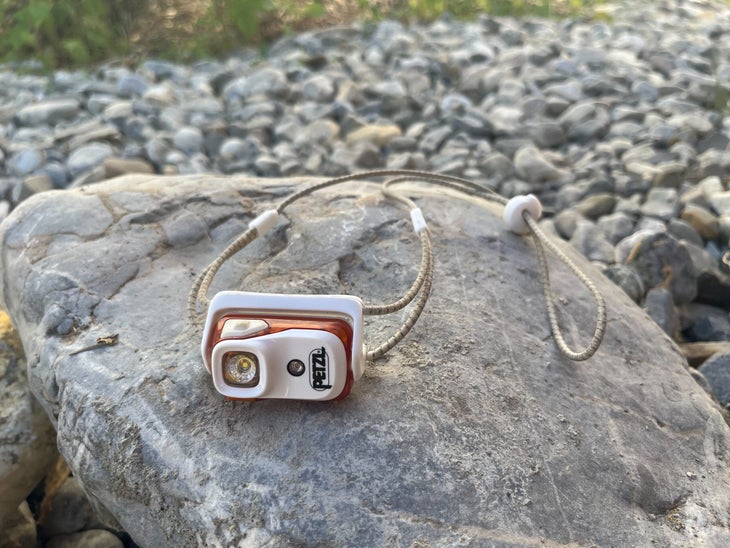
I bought Petzl’s microscopic Bindi headlamp because I was nervous—nervous about being on a big climb and dropping my headlamp at a bivy or while climbing through the night. My friend, who is a big fan of committing multi-day missions, told me I was sketchy to only climb with one. I heard his point, but deflected. Two is too heavy, and headlamps are expensive. He whipped the Bindi out of his pocket. I no longer had an excuse.
The Bindi clocks in at $45, 35 grams, and 200 lumens. The thin elastic head strap has a nearly negligible volume, and the main body is comparable to two lighters side by side. The beam rotates generously—nearly 360 degrees. And on its lowest white-light setting, this light will burn for 50 hours. The Bindi is rechargeable without any removable batteries, meaning you need to bring a power bank (or a second headlamp) if going for multiple days. As a result, it’s not the most powerful or longest-lasting headlamp I have ever used, but it’s perfect for after-work climbs and as an insurance policy on bigger outings. —Anthony Walsh, Senior Editor
Petzl Dual Connect Adjust
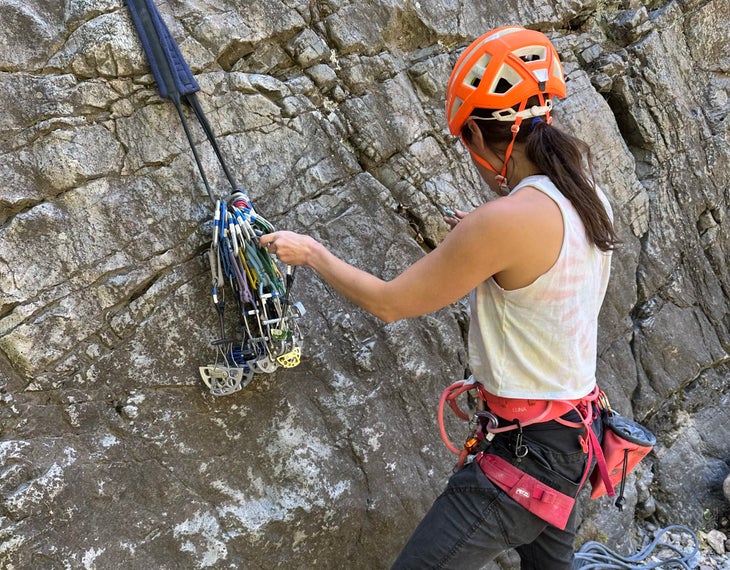
Before I loved this particular personal anchor system (PAS) from Petzl, I was a dedicated user of the Petzl Connect Adjust. The shortfall of that PAS is that if you want to use the Connect Adjust to extend a rappel but also as your PAS, you need two or a different system for extending your rappel. When I saw the Dual Connect Adjust ($79.95) at my local gear store, I bought one for my husband and began “borrowing” it (let’s be real: it’s mine now). I love that I can now use one PAS to both clean an anchor and simultaneously set up an extended rappel. Petzl also makes this PAS with dynamic rope so you can safely shock load it with a small fall (as long as the fall factor is <1). I’ve used it for cleaning single-pitch climbs, but it’s really ideal for multi-pitch rappels. —Maya Silver, Editor-in-Chief
Shop Petzl Dual Connect Adjust
Fanny Pack
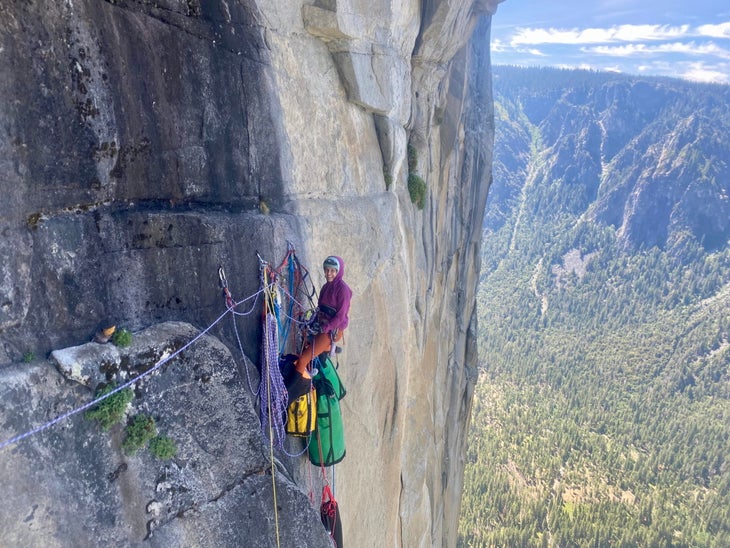
A lightweight fanny pack is my number-one climbing accessory for multi-pitch and big walls. I don’t often find it on gear checklists, but I rarely head out on a big adventure without it. Having access to my phone, chapstick, and even a snack in a pouch above my harness, at my waist, is so much more comfortable than storing those items in my pants pockets, where I can’t easily see them. When I’m belaying, for example, I can unzip the fanny pack and check the topo map on my phone’s lock screen without actually taking it out of the pack.
Recently, it’s also been useful for holding my phone and keys when I’m running in Moab, especially when I’m wearing shorts without pockets. The exact brand of fanny pack doesn’t really matter, but I prefer a low-volume, lightweight one that’s tall enough to hold my phone, like this one-liter pack from Fjallraven ($45). —Sam MacIlwaine, Associate Editor
Phone Tether for Climbing
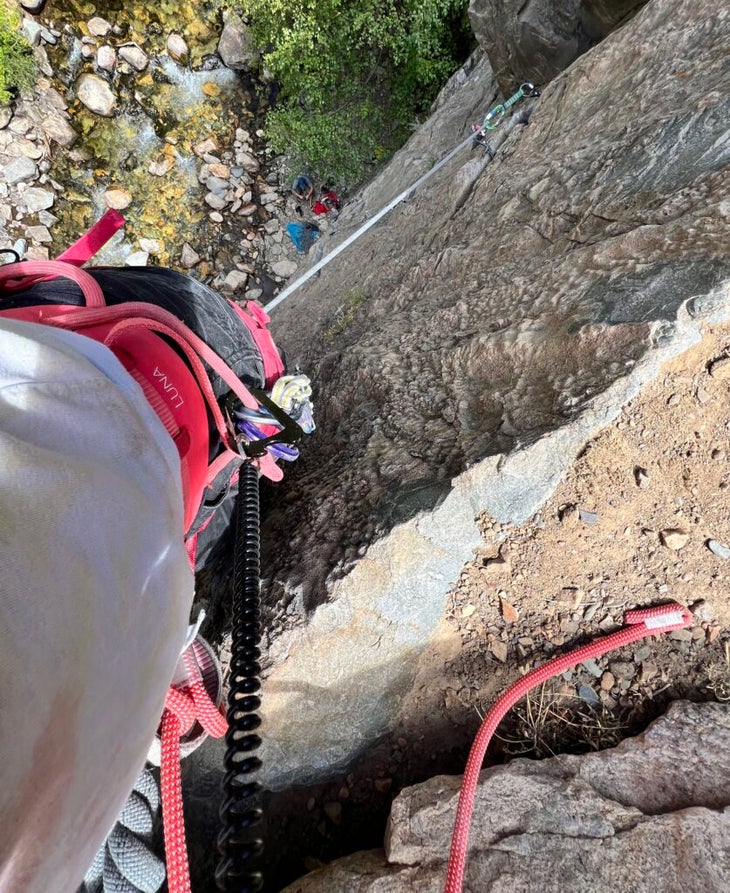
I’ve never dropped my phone from the anchor, but a fear of doing so usually precludes me from climbing with my phone. That’s sometimes a bummer if the view from the anchor is worth remembering. So when our video editor at Outside told me about these phone lanyards ($13.99), I was stoked to try out a klutz-proof way of climbing with my phone on board. This handy lanyard mounts under your case and connects to a bungee cord and carabiner. I usually clip the carabiner to my back gear loop. These come in packs of two so you can gift one to your partner, too. —Maya Silver, Editor-in-Chief
The post The Gear Climbing Editors Loved in August 2025 appeared first on Climbing.
]]>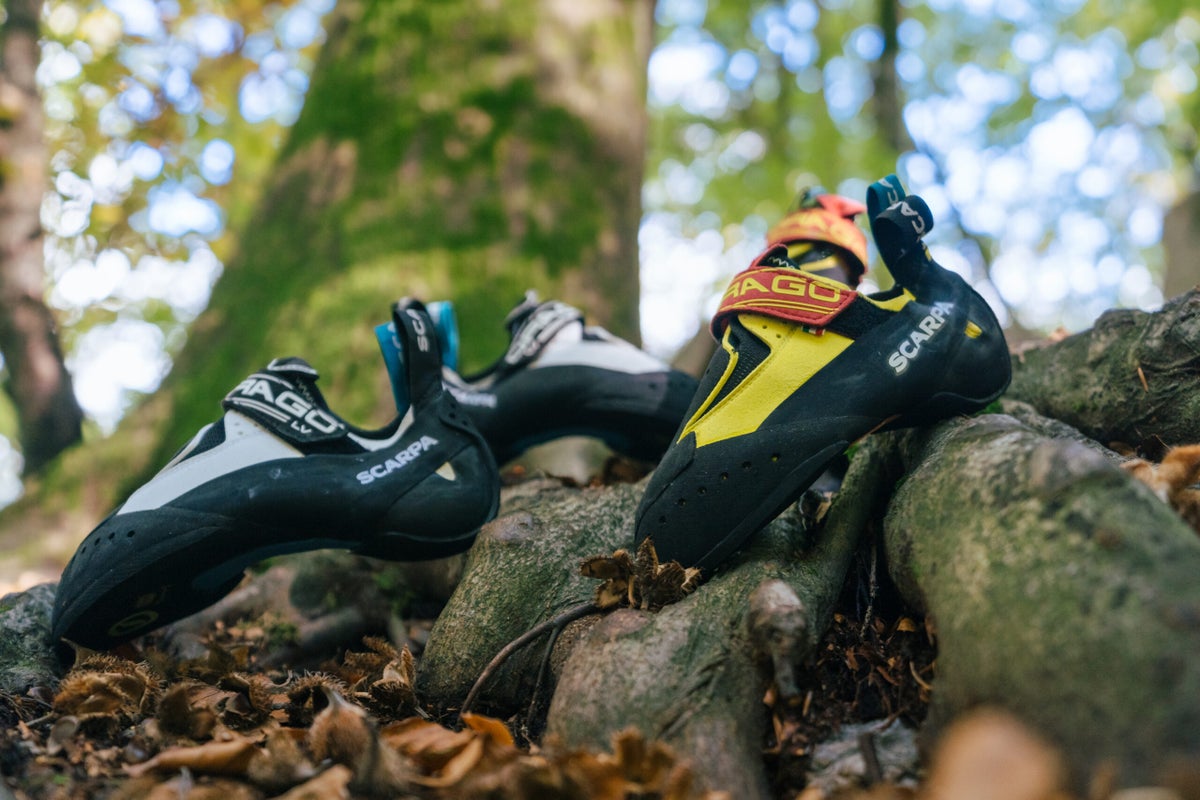
Our favorite shoes on sale during Labor Day Weekend, plus our top picks from Black Diamond's Sendtember Sale.
The post Wish You Had Fresh Climbing Shoes for Fall? These Field-Tested Pairs Are Up to 55% Off. appeared first on Climbing.
]]>
Updated August 28 – On the cusp of send temps, Rocktober, and Creeksgiving, Labor Day Sales offer climbers a chance to grab end-of-season deals before fall. This year’s roundup includes deals on some of our favorite climbing shoes from La Sportiva, Scarpa, and Evolv. We’ve also highlighted a few of our picks from Black Diamond’s Sendtember Sale.
Not sure what to look for when buying climbing shoes? Check out A Beginner’s Guide to Climbing Shoes.
Top Climbing Shoe Deals at a Glance
- 25-35% Off La Sportiva TC Pro
- 25% Off Scarpa Arpia V
- 25% Off Evolv Zenist
- 25% Off La Sportiva Mandala
- 25% Off Scarpa Instinct VS and VSR
- 25-50% Off La Sportiva Skwama Vegan
- 25% Off Scarpa Vapor S
- 30-55% Off Scarpa Quantic
- 25% Off Scarpa Drago and Drago LV
- 25% Off Scarpa Veloce
- 25% Off Black Diamond Momentum – Kids’
- 20% Off Evolv Venga – Kids’
Our 5 Favorite Black Diamond Sendtember Deals
Before we get into our shoe picks on sale below, let’s talk about the best gear you can get at 25% off during Black Diamond’s Sendtember Sale (August 28-September 1). There’s a lot on sale, from pitons and a portaledge to nuts, headlamps, and harnesses. Here are a few of our favorites from the sale.
Black Diamond Vapor Helmet $127 $170

Our ultralight helmet pick of 2025, the Vapor is among the lightest helmets on the market. With a breathable design, our testers found this helmet comfortable on big days out in the backcountry. Note that this helmet is ideal for folks with larger heads.
9.4 Dry Climbing Rope – Honnold Edition $255 $340
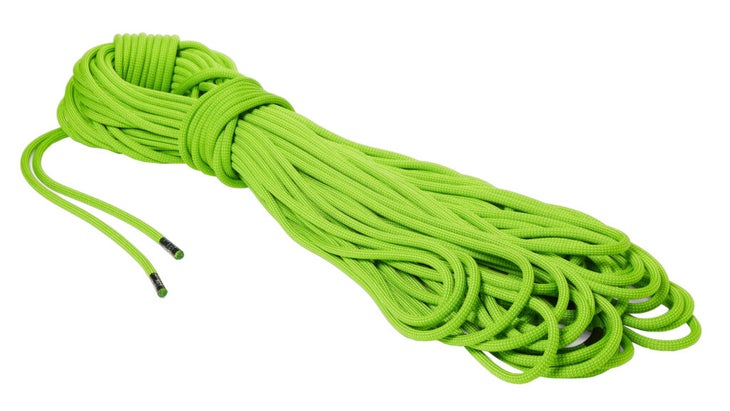
This kink-resistant rope impressed our testers with its light weight and durability. After taking big whips on this BD rope, hanging on it, and generally put it through the wringer. After a season of abuse, it showed hardly any signs of wear and tear. While this rope is a bit stiff out of the box, it was great to handle. Plus, a portion of the proceeds from each sale support the Honnold Foundation, and its mission to create more access to solar energy around the world. All in all, we chose the Black Diamond 9.4 Dry Climbing Rope as the finest rope for projecting this year.
Black Diamond Creek 50L Pack $180 $240
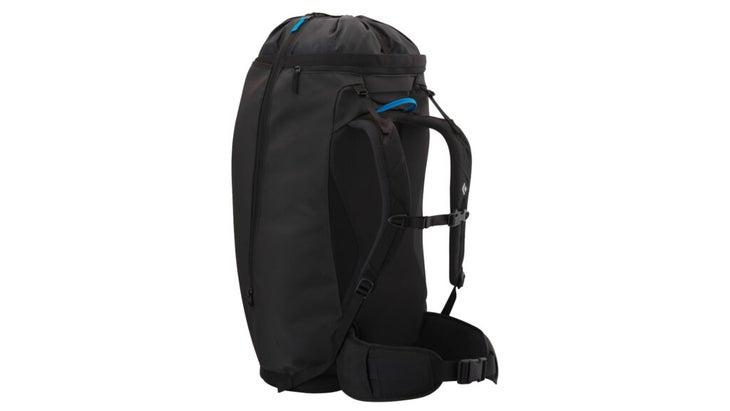
Our best crag pack of the year, BD’s flagship backpack is built to last, with thoughtfully placed pockets that make keeping it all organized a breeze. We’ve stuffed it with a rope, helmet, gear, a double trad rack, layers, and liters of liquid and taken it everywhere from Squamish to Smith Rock. The oversized top-loading opening and side zip also make accessing gear super easy. This pack is also available in 30L.
Quickdraws and Alpine Draws $58-$79 $77-$105
This is a great time to stock up on the little things for 25% less. Grab a pack or two of quickdraws or alpine draws to replace any that ought to be retired, or simply add to your gear closet. You’ll also find plenty of carabiners (including lockers), runners, chalk, and other essentials on sale.
13 Tested and Recommended Climbing Shoes on Sale
La Sportiva TC Pro ($142-$179 $219-239)
The TC Pro is a stiff, all-around rock shoe ideal for all-day wear, long routes, face climbing and cracks, and even El Cap. The shoes are unbeatable in places like Squamish, BC, North Conway, NH, and Yosemite, CA. Famously worn by Tommy Caldwell on the Dawn Wall and Alex Honnold on Freerider, the TC Pro is inarguably one of the most pedigreed granite shoes of all time. Read our full review here.
Note that an older model of the TC Pro is marked for clearance at 35% off, while a newer version is marked at 25% off.
Scarpa Arpia V ($134 $179)
The Arpia V is a lot like La Sportiva’s Miura VS. Both are excellent outdoor sport climbing shoes that shine in the 5-30 degree overhanging range. But the Arpia V is more comfortable, slightly less asymmetrical, far less prone to changing shape over the course of its life, and a little softer. This gives it versatility on varying steepness at the expense of edging quality. These shoes work well inside, too, but are a bit stiffer than some might prefer in an indoor shoe. That said, the Arpia V could be great indoor shoes for slightly heavier climbers looking for a bit more support. The “LV” in the women’s version stands for “lower volume,” which means it’s designed for narrower feet.
Shop Women’s Scarpa Arpia V LV

Evolv Zenist ($134 $179)
A soft, single-strap-closure slipper, the Zenist is known for its sensitivity and flex. It also has a large toe-hooking patch. The shoe is designed for competition climbing and excels on its coordination moves. And the Zenist Pro, U.S. climber Colin Duffy’s go-to, features more scumming rubber and a stiffer, more built-up last, which supports the foot for slab moves.
La Sportiva Mandala ($172 $229)
Our lead shoe tester Matt Samet loves this shoe, as do numerous La Sportiva athletes, including boulderer Keenan Takahashi and star competition sport climber Ai Mori. The Mandala is an excellent gym and rock shoe that feels stiffer than La Sportiva’s other No Edge shoes. This makes it proficient at steep and overhanging edging on stone. It has more weight/heft in the toebox, with just the “right amount” for big-toe activation on rock. It looks and feels overbuilt and has stretched very little, so should hold multiple resoles. Read our full review of the Mandala.
Scarpa Instinct VS and VSR
Scarpa keeps making different versions of its ever-popular Instinct—first released more than 15 years ago—and it’s getting hard to keep track of them. But these versions are favorites of our staff, our reviewers, and probably various shoe nerds in your gym.

Instinct VS ($164 $219)
One of the most beloved shoes of the past decade, the Instinct VS is a master of all angles. When it was first released, one of our testers (who has more than 100 shoes in his personal collection) had high praise: “I’m just gonna say it: This is one of the best shoes I’ve ever worn,” he wrote. “They’re versatile, comfortable, and outperform almost any other shoe on every kind of terrain.”
Shop Women’s Scarpa Instinct VS
Instinct VSR ($164 $219)
Built almost exactly the same last as the outstanding Instinct VS, shoe designers put a softer rubber on the Instinct VSR, making it generally preferable for gym climbers, boulderers, and route climbers who keep to the steeps. The Instinct VSR won our 2017 Editor’s Choice Award and has remained a go-to for several of Climbing’s writers and editors. But if you’re looking for elite edging performance, consider the Instinct VS instead. The “LV” in the women’s version stands for “lower volume,” which means it’s designed for narrower feet.
Shop Men’s Scarpa Instinct VSR
Shop Women’s Scarpa Instinct VSR LV
La Sportiva Skwama Vegan ($100-$164 $199-$219)
Though the Skwama is softer than La Sportiva’s Solution line, and therefore doesn’t edge quite as masterfully, it’s still a highly versatile shoe. The Skwama performs well on everything from vertical basalt sport climbs and technical limestone cave boulders to marathon gym training sessions. In sum: A high-performance slipper-velcro hybrid that’s excellent for just about everything—and animal-friendly to boot. It’s included in the Our Favorite Sport Climbing Shoes roundup. Note that an older model of the Skwama Vegan is marked for clearance at 35% off, while a newer version is marked at 25% off.
Shop Men’s Newer La Sportiva Skwama Vegan
Shop Men’s Older La Sportiva Skwama Vegan
Shop Women’s Newer La Sportiva Skwama Vegan
Shop Women’s Older La Sportiva Skwama Vegan
Scarpa Vapor S ($149 $199)
Scarpa’s Vapor S is a comfortable, performance-oriented slipper that excels equally well on systems boards, polished limestone, slabby volumes, and edging terrain. Unlike most slippers—and most shoes on this list—it’s a relatively flat shoe (better for the flat-footed among you) and quite wide. But it’s also incredibly versatile—great for paddling up caves in the Red River Gorge and torquing up cracks in Squamish. They appear on our roundup Our Favorite Sport Climbing Shoes, but Aidan Roberts also wore one on while working on Spots of Time, the UKs first V17 boulder. Read our full review here.
Scarpa Quantic ($83-$129 $185)
The Quantic is an all-arounder shoe that performs just fine on everything, but truly well on nothing. The key selling point of this shoe? It’s comfortable and affordable. It does far better in the gym than on rock, but our testers have climbed as hard as outdoor V9 and 5.13 with the Quantics on board. Almost all of our testers raved about comfort, which makes it a good training/gym session shoe. As their designer, Heinz Mariacher, says, “My intention was to offer a multi-purpose performance shoe, a mix of lightness, sensitivity, and good precision.” The Scarpa Quantic represents a step up into more advanced footwear for newer or intermediate climbers. Note that the women’s version is more deeply discounted (55% off) than the men’s version (30% off).
Scarpa Drago & Drago LV ($172 $229)
The Drago is arguably the most popular high-performance shoe on the international competition circuit. It’s also climbed many of the world’s hardest sport routes and boulders outside. One of our testers wrote: “The Drago defies standard climbing-shoe dichotomies. It’s a performance model that’s comfortable. An aggressive downturn makes it supple enough to smear on the smallest of smidges. It’s super soft, yet can toe on tiny edges as well as, if not better than, stiff edging-specific shoes, due to the midsole. It was designed as a specialized sport, bouldering and competition shoe, yet makes an excellent all-arounder; just don’t try to crack climb in them.”
What’s the difference between the Drago and the Drago LV? Width. Climbers with narrower feet should go for the LV version.
Scarpa Veloce ($134 $179)
Both the OG Veloce and the Veloce L (the “L” stands for “lace) are soft shoes, designed for the combination of comfort and smear performance desired (or so says Scarpa) by beginner and intermediate climbers who spend most or all of their time at the gym. The Veloce L is solid on anything steep and/or smeary—from board and volume climbs in the gym to limestone caves, vertical cobble climbs, and steep basalt sport routes. If you’re looking for edging performance, though, run like the wind away from this shoe. Read our review of the Veloce L, entitled Scarpa’s Latest Shoe Made me Feel Like a Con Artist.
Kids’ Climbing Shoes on Sale
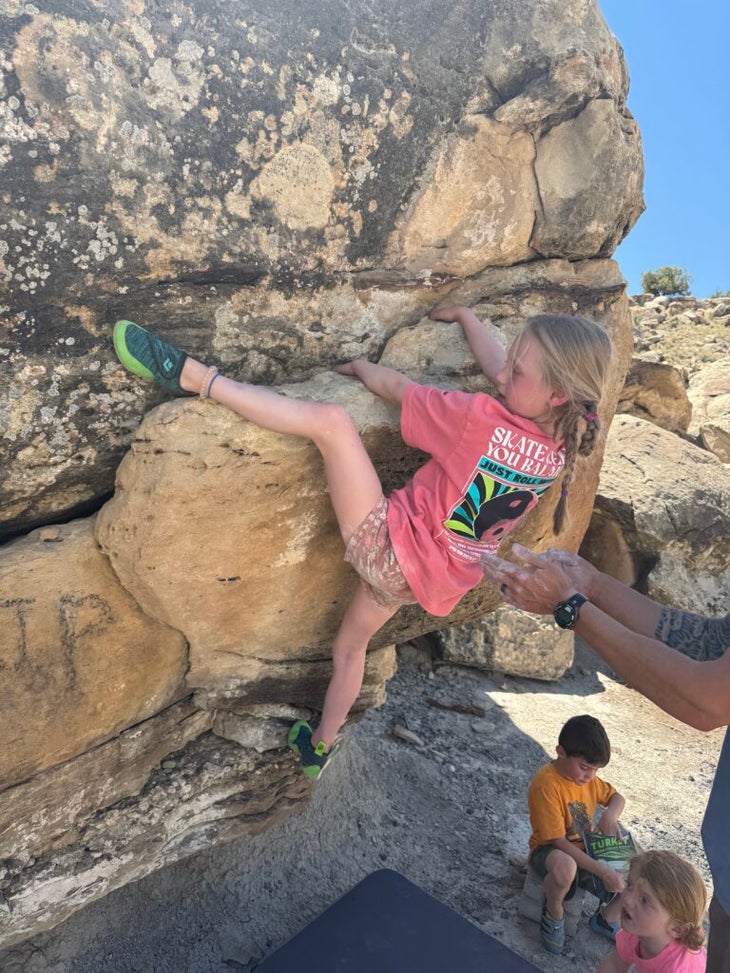
While we haven’t officially reviewed kids’ climbing shoes, there are two pairs on sale—one of which an editor’s daughter has been climbing in for two or three years. Evolv’s Venga Climbing Shoe for kids is also on sale.
Shop Kids’ Black Diamond Momentum
Tips for Climbers Shopping Labor Day Shoe Deals
Want to avoid returning that pair of shoes you scored at a discount during a Labor Day Sale? Here are some tips:
- Buy from a brand that you already know your size in vs. trying a new brand.
- Shop Labor Day Sales early before your shoe size sells out! We see this happen all the time. Usually, there is limited inventory left of past season shoe models. Retailers are trying to burn through this excess before releasing next season’s models. So supply may be quite limited.
- If you can, try on the shoe at a store or gym beforehand to make sure it’s the best size for you.
- When you see “LV” after a shoe name, it indicates “lower volume.” These versions are designed for narrower feet. If you’re male with narrower feet, you can convert your size and opt for an LV pair, even if it’s also marked as “women’s.”
- Before you panic and initiate a return, remember that climbing shoes take time to break in. That said, you don’t want to break them in too much, to the point that you wouldn’t be able to return them.
The post Wish You Had Fresh Climbing Shoes for Fall? These Field-Tested Pairs Are Up to 55% Off. appeared first on Climbing.
]]>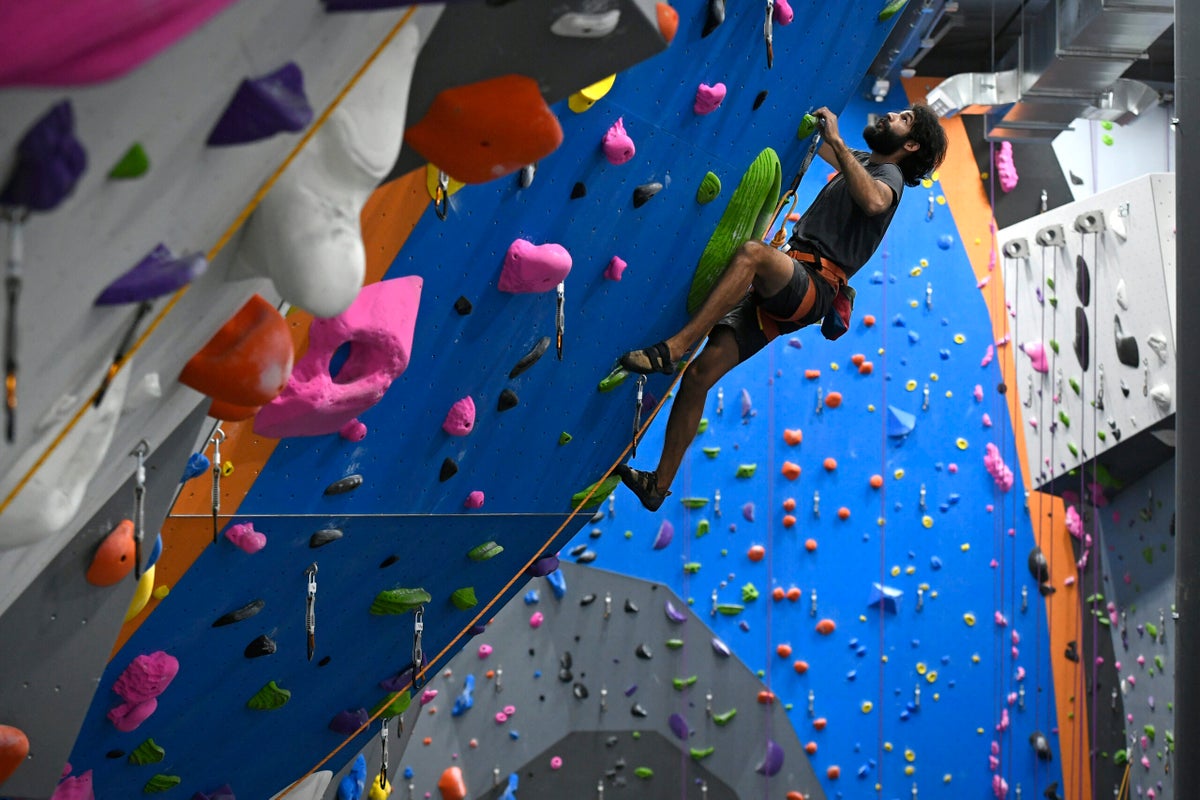
Essentials for gym climbers, tested and recommended
The post The Ultimate Gym Climber Starter Pack appeared first on Climbing.
]]>
So you’re committing to gym climbing and are officially over the stinky rental gear? You’re in the right place. We’ve identified some of our top, field-tested products for indoor climbing and training. If you’re on a tight budget, you can always buy one thing at a time while continuing to rent the rest of the gear you need. Dedicated boulderers: You can ignore the recs for harness, rope, and belay device.
In general, boulderers should expect to spend between $230 and $370 on their gym climbing gear list, while roped climbers can expect to drop between $600 and $750 (presuming you also plan to lead and therefore need a rope). If you’re getting into climbing with a friend, you could also share and split the cost of gear like a rope and belay device.
Other gear not included on this list that you might want to spring for down the line? Belay glasses for long sessions that leave your neck sore, dedicated climbing pants, a rope bag/tarp (or a budget laundry basket) to cart your rope around, and, if you’re so inclined, a mini tripod to film yourself on your project.
Avid gym climber Avianna Frady discusses what to look for when you start investing in your gym climbing
The post The Ultimate Gym Climber Starter Pack appeared first on Climbing.
]]>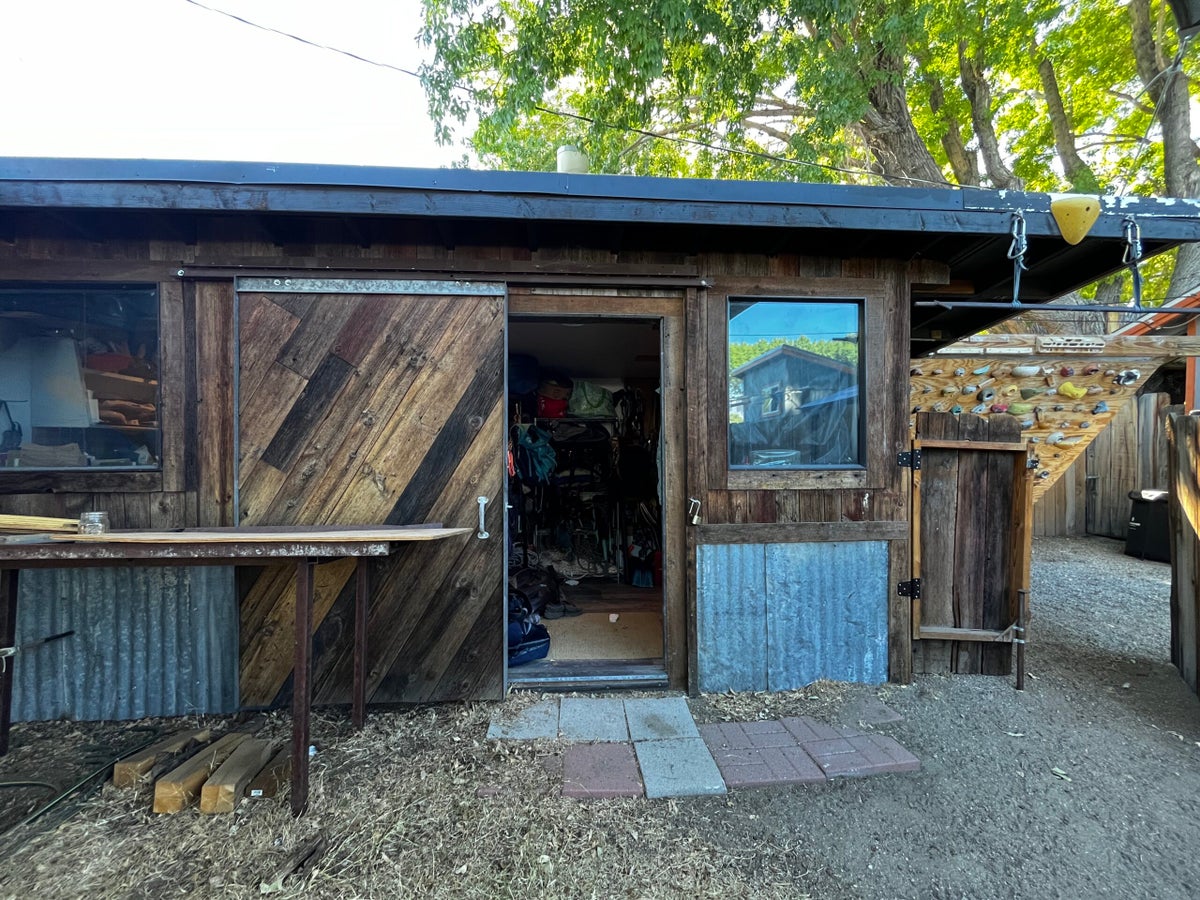
Katie Lambert shares her gear storage tips and top picks
The post A Pro Climber’s Custom Gear Shed—and Her Favorite Things Inside It appeared first on Climbing.
]]>
With three decades of trad, sport, bouldering, and big wall experience, Katie Lambert knows volumes about the best gear—and how to organize it. Born in Louisiana but long based in Bishop, California, Lambert designed and built out a gear shed with her husband Ben Ditto, a climber and photographer. When she’s not climbing, Lambert can be found working at the nonprofit Sacred Rok, which helps provide underserved youth access to climbing and the outdoors in the Yosemite area.
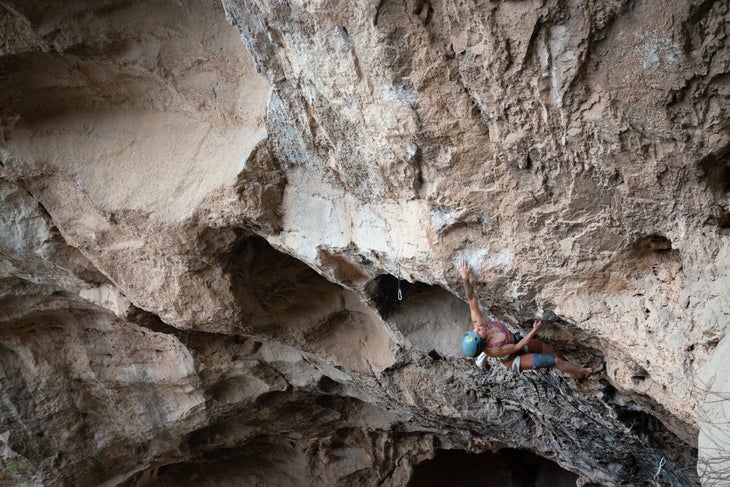
Before we get into her gear storage layout—and what she fills it with—we caught up with Lambert to see what she’s been up to this season. Recently, she got the second ascent of High Country Lover (5.14b/c), a sport route in Pine Creek Canyon. “Situated at 8,200 feet and south facing, conditions were a major obstacle,” Lambert says. “But so was my power and power endurance.” But she trained hard, locked in, and redpointed the route in spring.
Since then, Lambert has been climbing for fun on alpine peaks and taking day trips to The Incredible Hulk. She’s also making steady progress toward her goal of sending 300 5.13s by 2030—she’s currently holding strong at 202 5.13s.
A dream custom climber gear shed
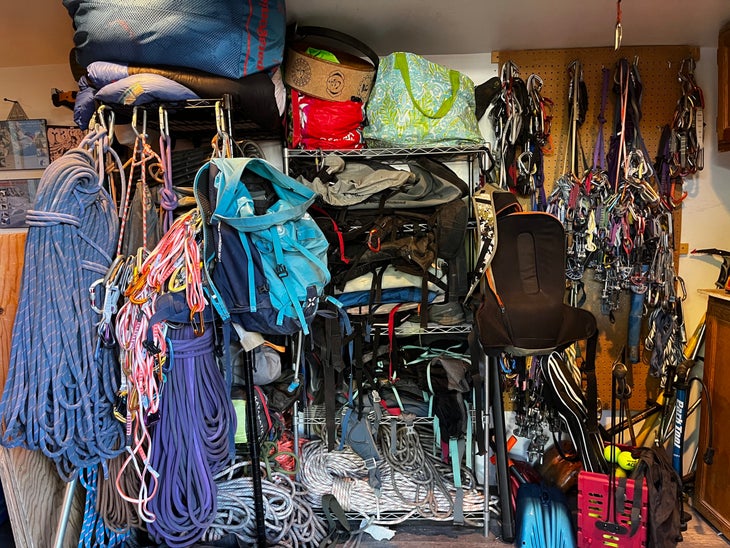
To store all the gear she needs for her 300 x 5.13 project, get into the alpine, and climb across disciplines, Lambert built a custom gear shed with Ditto on their property in Bishop. They equipped it with built-in shelving and peg boards to hang and organize their gear.
Here are a few tips from their shed setup:
- Hang all draws, cams, and slings on a peg board.
- Stack all packs, ropes, and sleeping bags on shelves for ease of access.
- If you’re building out a closet or shed of your own, gather all your gear and measure the area it takes up to determine how big it needs to be. Inevitably, you’ll probably need more room down the line as you acquire more gear. So if you can, make your shed bigger than it needs to be based on your current gear collection size.
What’s inside Lambert’s shed

These are some of Lambert’s favorite pieces of climbing gear, from her favorite helmet to the essentials-only bag she takes on big walls.
Mammut Assist Belay Resistor
I’m a very petite climber and it’s the rare occasion that I’m climbing with someone of lighter or equal weight. I’ve no problem giving a soft catch but I can often get pulled up too high or even pulled in too close to the first piece of protection. The Assist Belay Resistor is a lightweight piece I don’t mind carrying with me to the crag if I know I’ll be giving some catches where my climber is likely taking big falls.
Editor’s note: Mammut will release its Assist Belay Resister in spring 2026. Other options include the Edelrid Ohm (or wait a few weeks for the soon-to-be-released and improved Edelrid Ohmega), or the Raed Zaed.
Alien Revolution Offset Cams
These may be a little obscure to come by these days. But if you’re in the market for cams that work exceptionally well in limestone pods, fissures, and ripples, then these beauties are worth seeking out. They also never blow in flared granite pin-scars, and can fit the straight-in sandstone cracks. My favorites are the blue/black, blue/green, green/yellow, and yellow/red.
Shop Alien Revolution Offset Cams
Asana Rock Star Pad
The thing you need to cover gaps between your bordering pads—or even to use as a nice little spot off the ground for the sit starts. You can also toss it over a rock or root that may stick out the side of the padded zone, but is still potentially in the “landing zone.”
Mammut Rime Light Flex Vest
Living in the Eastern Sierra, I’m often climbing in the winter on south-facing cliffs in 30ish degree weather. In the summer months, I enjoy a bit of “Calpinism” that requires a little something extra, but not quite a full jacket. This vest is just the thing and is also awesome for cold road bike rides.
Mammut Workhorse HMS Screwgate Carabiner
This is Mammut’s largest locking carabiner, but it’s also fairly light. It’s a must-have for wall climbing. It allows for plenty of room and versatility, from loading with gear at wall bivies, to fixing portaledges, ropes, and haul bags.
Shop Mammut Workhorse HMS Screwgate Carabiner
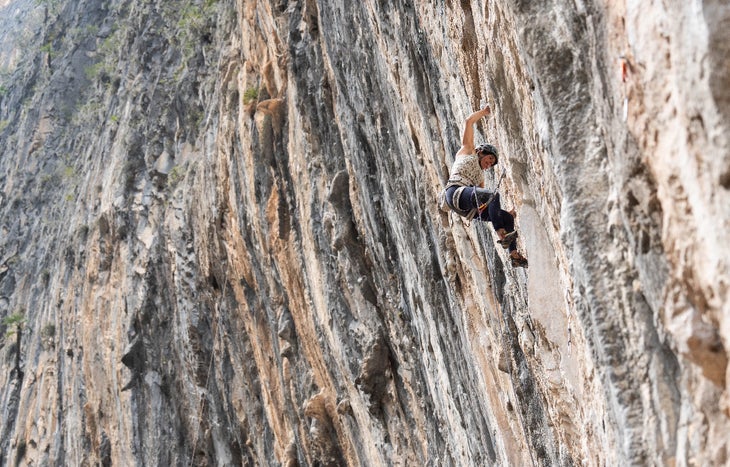
Organic Climbing Ditty Bag
Perfect for storing everything from nail and skin maintenance kits, to cell phones, headlamps, and extra wall or trail snacks.
Shop Organic Climbing Ditty Bag
Patagonia Duckbill Cap
Super light, easy to pack away, and great for running and biking. Its low-profile design allows for comfort and functionality under a helmet for multi-pitch climbing in the sun. It also fits well under a sun hoodie.
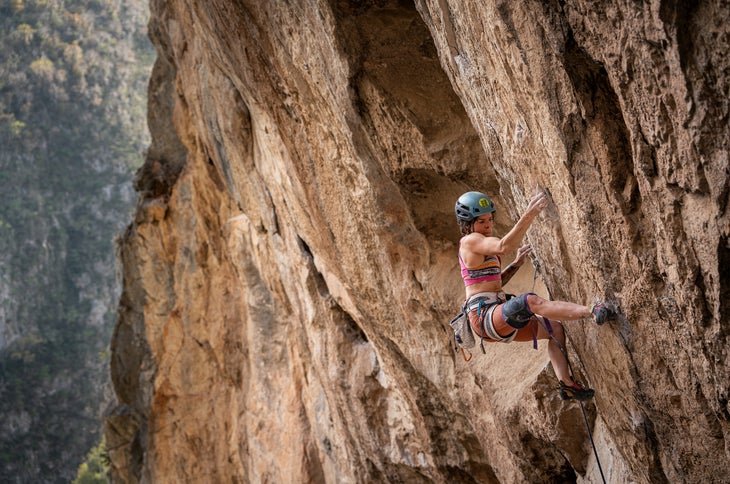
Mammut Wall Rider Helmet
It’s light, comfortable, and gives all the protection you want from a climbing helmet.
Katie Lambert is a sponsored Mammut North America athlete and she is on the Pro Team for Physivantage.
The post A Pro Climber’s Custom Gear Shed—and Her Favorite Things Inside It appeared first on Climbing.
]]>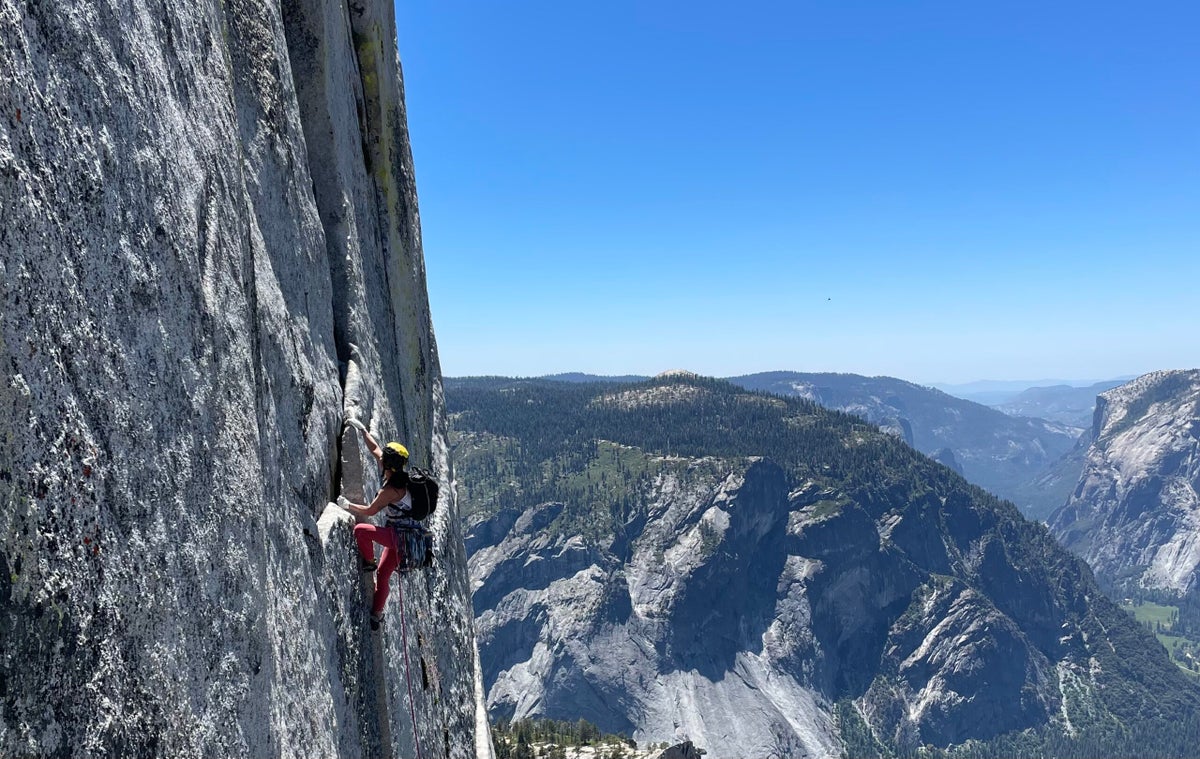
The "Brazilian Climber Girl" shares the gear she won’t climb without
The post 5 Gear Picks the “Brazilian Climber Girl” Swears By While Training for Patagonia’s Seven Summits appeared first on Climbing.
]]>
Offwidths, big walls, ice. Gisely “Brazilian Climber Girl” Ferraz has a variety of passions as a pro climber. But her big goal right now? Ticking off the Seven Summits of Cerro Chaltén in Patagonia. With two peaks left—Aguja Poincenot and Aguja Mermoz—she is focused on training right now for her objective. “I’m currently spending my summer in the High Sierra and Yosemite,” Ferraz says. “This place makes me so happy. I’ve been focusing on alpine climbing to train for Patagonia.”
Recently, Ferraz climbed Half Dome in 10 hours and 10 minutes, and ticked the Tuolumne Triple Crown. She’s also exploring lines on The Hulk and chasing some Peter Croft routes. Here are five of her all-around gear picks.
La Sportiva TC Pro Shoe
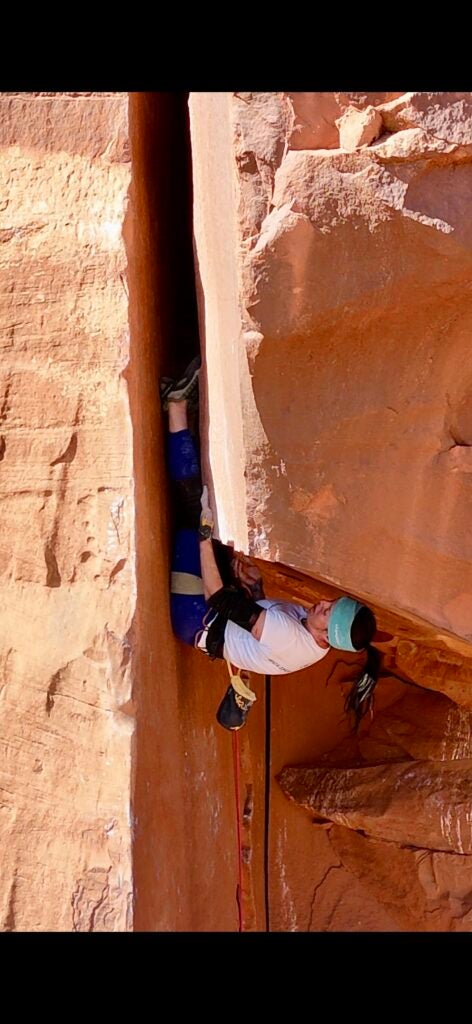
The best! My favorite piece of gear is hands-down the TC Pro from La Sportiva. These shoes are awesome. I can climb just about anything in them. From offwidth invert, techy trad routes to big walls and granite to sandstone cracks, they deliver every time. They’re incredibly versatile. I never leave for a mission without them. When they’re brand new, they can feel a little stiff or unusual, but give them some time to break in and they’ll become your favorite crack climbing shoes.
La Sportiva TX4 Approach Shoes
The best approach shoes I’ve had so far. The La Sportiva TX4s are my go-to—they’re wide, incredibly comfortable, and offer excellent grip, even solid enough for moderate climbing. They perform great on rope ascents, with enough protection to keep aid ladders from digging into my feet. For wide-footed climbers, the fit is spot-on. I’m also loving the new Stone Blue/Cherry Tomato color—looks fantastic.
Shop La Sportiva TX4 Approach Shoe
Grivel Dark Machine Ice Axe
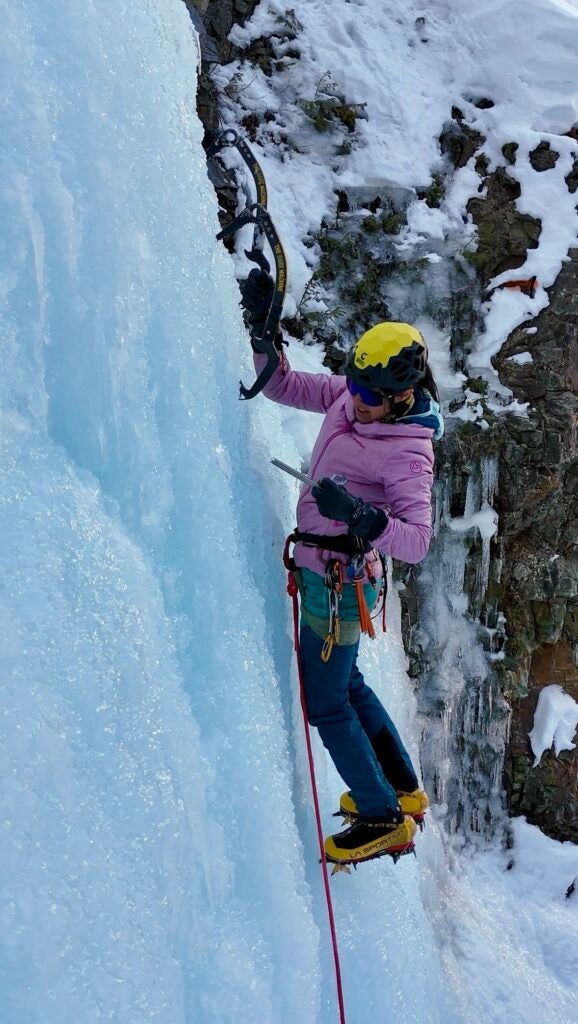
The Grivel Dark Machine is my favorite ice tool. Even the name is cool. It’s light, strong, and delivers precise performance on steep ice and mixed terrain. The swing feels smooth, the grip is solid, and it’s a tool I rely on when the climbing gets serious.
Shop Grivel Dark Machine Ice Axe
Julbo Fury REACTIV Sunglasses
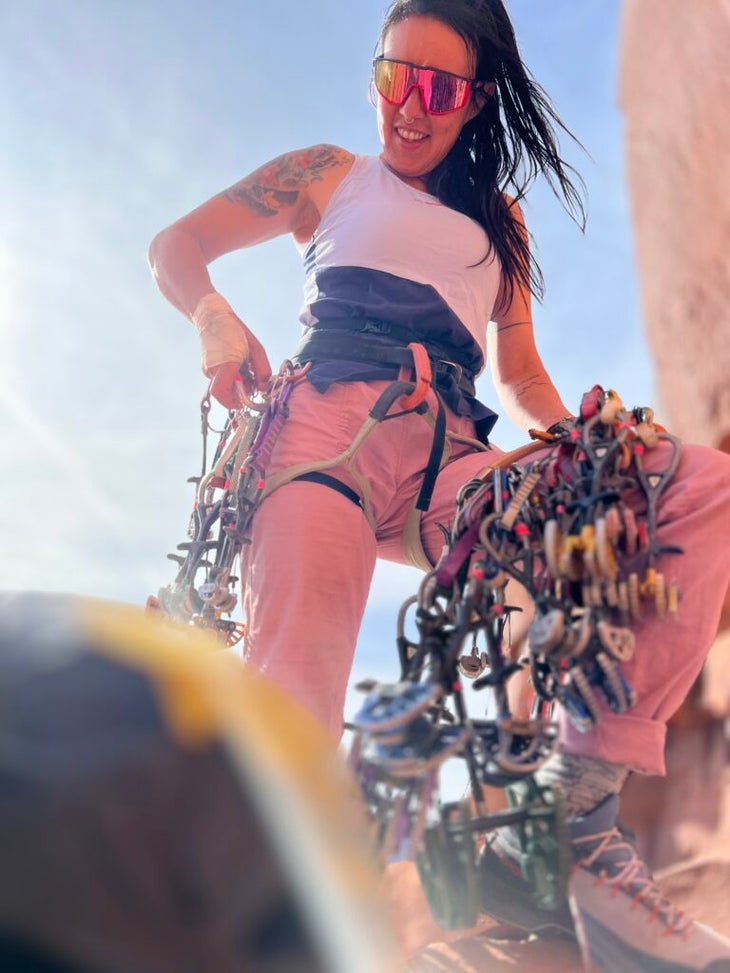
Sunny days in the alpine can be brutal on your eyes. I love these shades because of the REACTIV lenses—they adapt fast to changing light conditions. Whether I’m in full sun, shadow, or moving fast through mixed terrain, I can keep rolling all day without swapping lenses. Plus, the frame is super lightweight, making them perfect for long missions. I wear them all day and they don’t bother my ears.
Relevant read: How Gisely Ferraz Rigs Her Van as a Gear Closet
Paka Sun Hoodie

During alpine summer days, protecting myself from the sun is a must. The fabric of this hoodie is soft and made from natural fibers, so it doesn’t need constant washing, it doesn’t hold odors, and I can wear it over and over again. It’s perfect for climbers that can’t do laundry often, for living in the van, and for travelling!
Ferraz is sponsored by La Sportiva, Grivel, Paka, and Julbo Eyewear.
The post 5 Gear Picks the “Brazilian Climber Girl” Swears By While Training for Patagonia’s Seven Summits appeared first on Climbing.
]]>
We asked climbers to describe the most important move of their lives. Read the top five essays that blew us away.
The post The Top Five Winners of the June Writing Contest appeared first on Climbing.
]]>
For the June 2025 Writing Contest, we asked climbers to describe the most important move of their lives in 500 words or less. Here are the top five essays that blew us away.
First Place: David Rozul
Then someone said, “Let’s unrope, it’ll be faster.” Someone else agreed. I nodded. I didn’t want to be the weak link.
Read Rozul’s essay here: The Most Important Move of My Life Was the One I Didn’t Make.
Second Place: Uyen-Phuong Nguyen
I don’t remember the color of the sunrise that morning on Rainier, only that it never touched the shadows beneath the snow bridge.
Read Nguyen’s essay here: I Took a Step Over a Crevasse. I Didn’t Expect to Find Myself on the Other Side.
Third Place: Megan Noble
There’s an ease to the atmosphere, a peace running through these hills—save for the steady simmer inside me, frustrated by my inability to follow in Riley’s footsteps.
Read Noble’s essay here: For Me, the Beta Came From Within.
Fourth Place: Eric Bates
Through blurred eyes, I tried to keep the shot in focus, thinking to myself that the three of us would remember this move for the rest of our lives.
Read Bates’s essay here: After Surviving Cancer, They Were Back on Rock. I Couldn’t Miss the Shot.
Fifth Place: Adib Rabbani
For one slippery second, I was levitating on moss and prayer. No muscle, no style—just the ghost of a miracle.
Read Rabbani’s essay here: Sometimes, the Scariest Move Is the One That Holds
The post The Top Five Winners of the June Writing Contest appeared first on Climbing.
]]>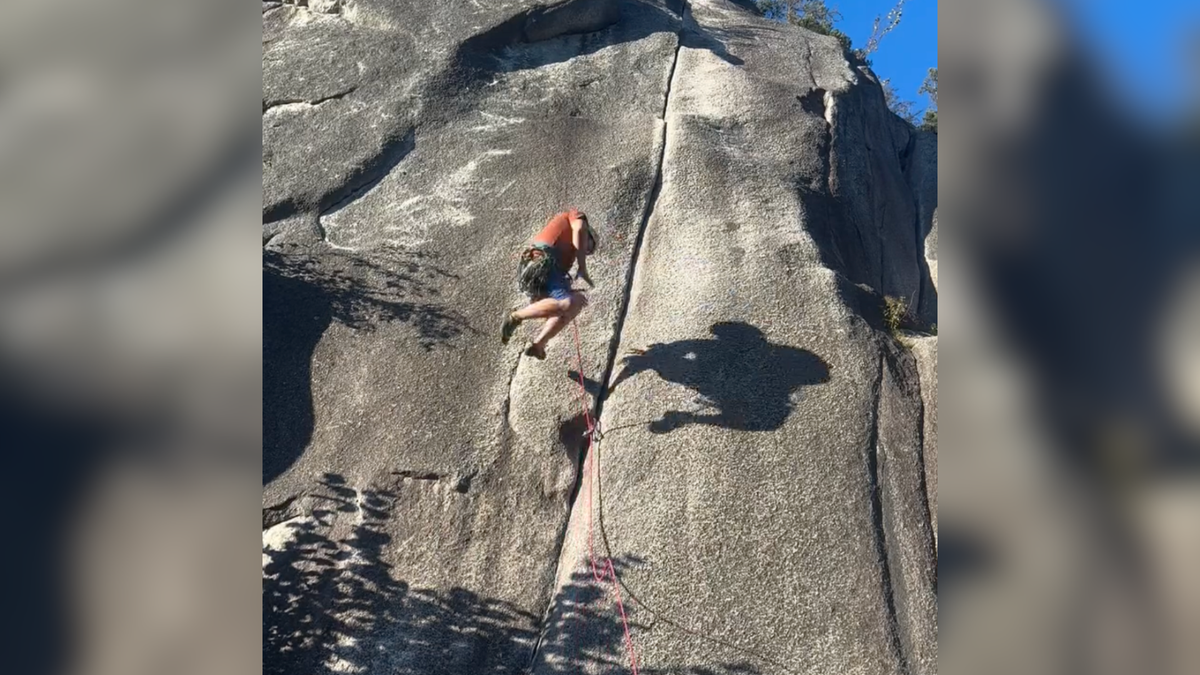
A 15-foot ground fall with, somehow, zero consequences
The post Weekend Whipper: An Expert Catch Saves This Climber from Serious Injury appeared first on Climbing.
]]>
Readers, please send us your Weekend Whipper videos using this form.
If there’s one thing that separates a regular member of society who’s watched Free Solo from a real rock climber—who, let’s be honest, has probably also watched Free Solo—it’s the understanding that a rope does not equal 100% safety.
Conversely, a ground fall does not, 100% of the time, equal injury and death.
In this Weekend Whipper, Oregon-based climber Luis Armando experiences both of these truths at once.
He’s just starting up Partners in Crime (5.11a), a 100-foot finger crack in Squamish, British Columbia. Armando had tried Partners in Crime before, but he’d never fallen in the lower section. On this day, however, it was particularly hot and slippery.
By the time he had climbed about 15 feet up from the ground, Armando had placed two pieces, and he’d unclipped the lower one—a fine choice, as the lower piece wouldn’t be useful as protection. He’s five feet above his last piece when he slips.
“Falling!” he yells.
Armando’s belayer, Matt Gowie, has Armando on minimal slack, but even so, the rope doesn’t tighten until Armando’s feet have nearly touched the ground. Gowie, being lighter than Armando, is yanked five feet up into the wall.
It’s the soft catch, plus the fact that Armando manages to stay upright, that results in zero injuries from what could have otherwise been a bone-crunching drop.
Later, Gowie tells Climbing, “[Armando] jumped right back up like a champ … and continued to climb the route.”
Armando himself didn’t seem phased. “All and all, bad place to fall, great catch, and great route,” he says. “Will be back.”
Happy Friday, and be safe out there this weekend.
The post Weekend Whipper: An Expert Catch Saves This Climber from Serious Injury appeared first on Climbing.
]]>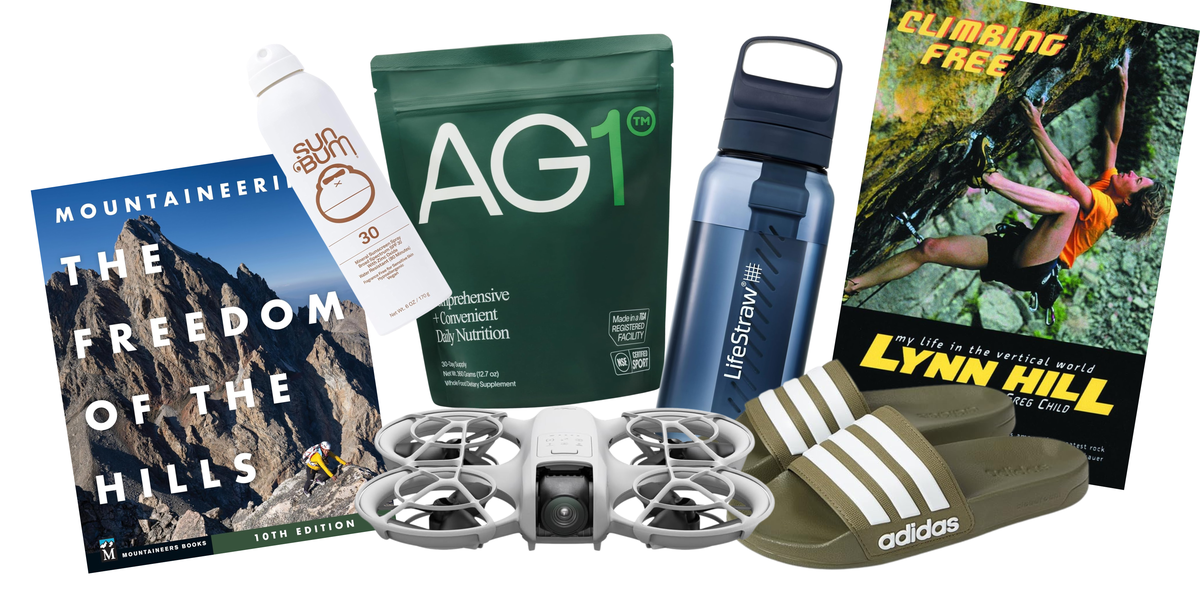
Editors’ picks on sale this week
The post 14 Deals for Your Climbing Lifestyle at Amazon Prime Days (New Deals Added!) appeared first on Climbing.
]]>
Friends don’t let friends buy climbing gear on Amazon. And as it turns out, there really isn’t much in the way of climbing gear on sale during the 2025 Amazon Prime Days event anyway. But there are a few things out there on sale that might just enhance your climbing lifestyle, whether you’re a dirtbag crashing on your friend’s couch, or a tech bro who just got into bouldering.
Note that while Prime Day started as a single day of deals, it now spans several. This year, it runs from Tuesday, July 8 through Friday, July 11 (ends midnight Pacific Time). So snatch up our favorites before the clock runs down. Also most of these deals are only accessible for Amazon Prime members.
1. Mountaineering: Freedom of the Hills (20% Off)
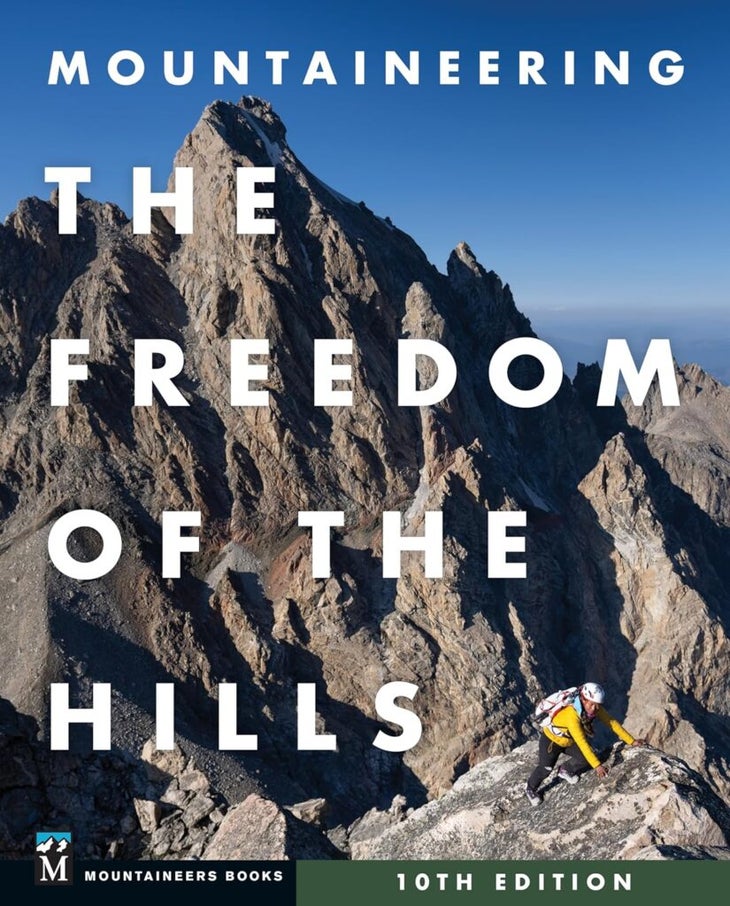
Before there was YouTube and Instagram Reels to teach us core climbing skills, there was this classic tome first printed in 1960. You know it’s legit when the top reviews come from the likes of Conrad Anker, Steve House, and Lynn Hill, to name a few legends who call this book their bible. The 10th edition of this super helpful guide is currently 20% off.
2. Pete Whittaker’s Crack Climbing: The Definitive Guide (20% Off)
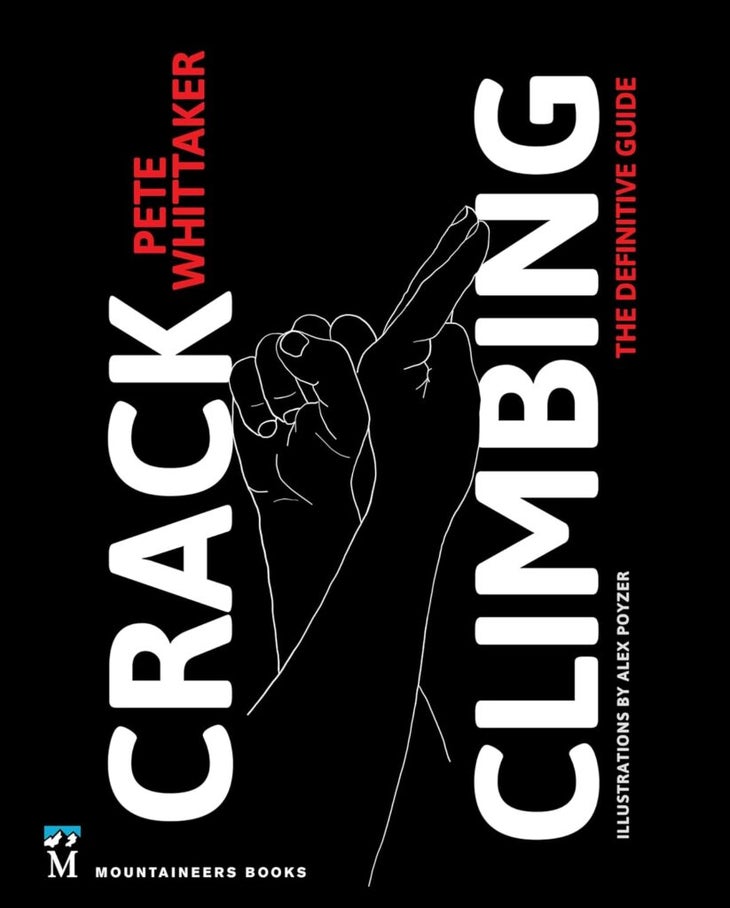
One half of the Wide Boyz, Pete Whittaker, shares his extensive crack climbing knowledge in this highly rated guide. With chapters dedicated to different crack sizes, helpful illustrations, taping skills, and pro tips, Whittaker’s guide is a must-read for anyone serious about cracks.
Shop Crack Climbing: The Definitive Guide
3. Lynn Hill’s Climbing Free Memoir (26% Off)

Hill opens her memoir with the gut-wrenching groundfall she took in France in 1989, but the drama doesn’t end there. She recounts how she first got into climbing, erratic climbing partners, her remarkable free ascent of The Nose, and her competition days, among many other tales. I couldn’t put this book down!
4. LifeStraw Go Series Water Filter Bottle (32% Off)
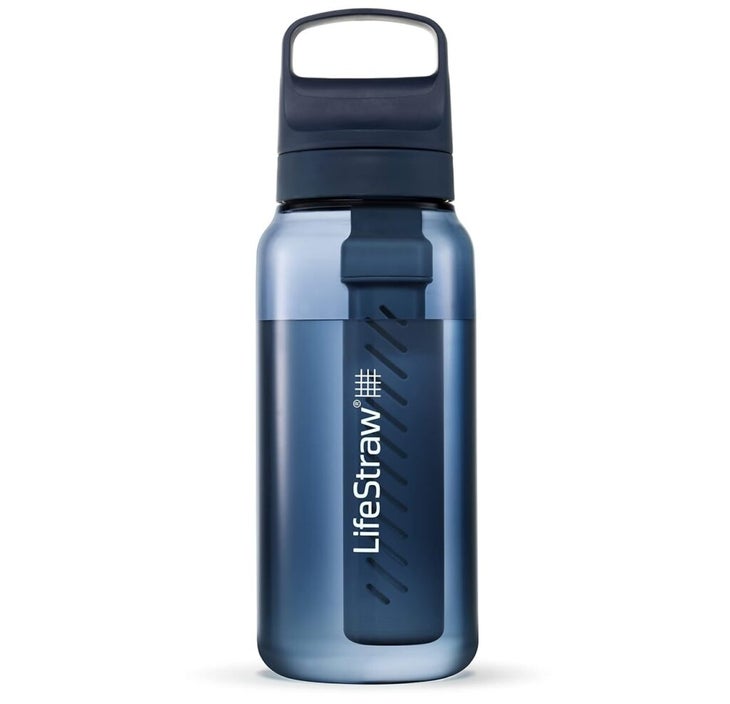
I bought this water bottle for a trip to Ecuador a few years ago and have been a LifeStraw fan ever since. It removes bacteria and parasites if you’re filtering water from a lake or river, while also getting rid of microplastics. Each membrane microfilter has a lifespan of about 1,000 gallons of water (that’s five years of using it on the daily). Whether you’re climbing abroad where you can’t drink the water, or headed into the backcountry, you’ll be stoked to have this bottle with you. You can also stock up on extra filters at up to 60% off right now.
Shop LifeStraw Go Series Water Filter Bottle
Shop LifeStraw Personal Water Filter
5. Adidas Slides (Up to 47% Off)

After a long day in approach shoes and climbing shoes, I love letting my feet breathe in some open-air slides. While I’ve preferred the massage sandals since I started wearing them back in 2000, that “nubby footbed” isn’t for everyone (plus it’s not currently on sale). So if you like a smoother feel, stock up on these slides on sale and keep a pair in your car for post-crag tailgating in peak comfort. Bonus: If you’re living in your car, these so-called shower slides dry quickly so you can wear them at your nearest coin-operated shower location.
6. Coola Organic Mineral Sunscreen (26% Off)
Your future self will thank you for applying sunscreen before (and during) every day spent climbing outside. My current self wishes my former self had heeded that advice in her 20s. I love the feel and non-toxicity of all of Coola’s sunscreens, including this one.
7. Sun Bum Mineral Spray (16-37% Off)
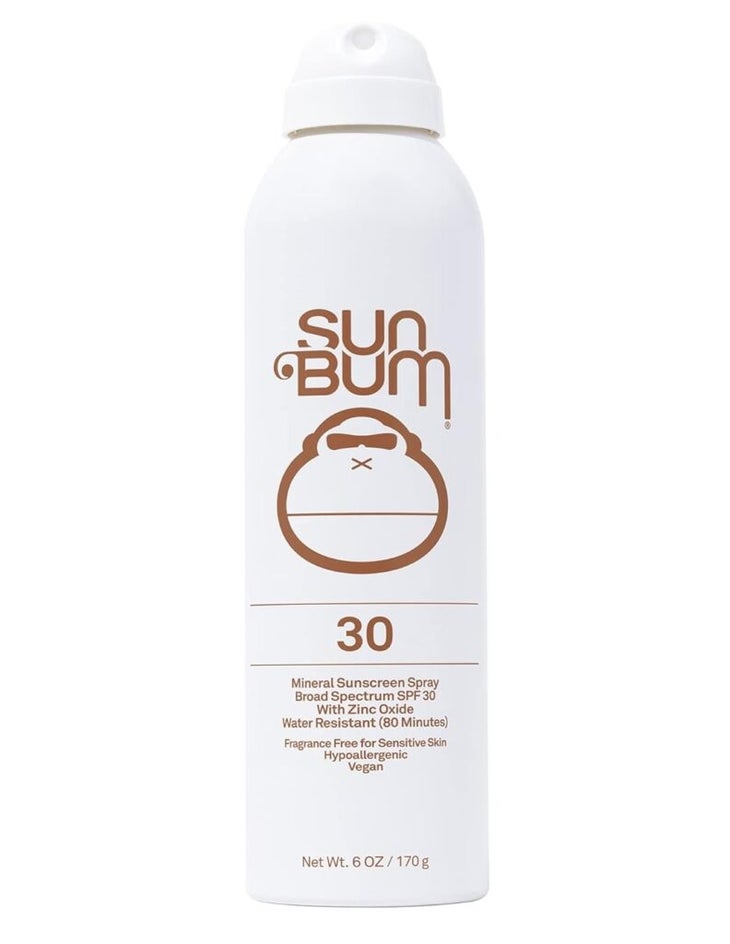
If you don’t want to slick up those fingers, choose this spray sunscreen instead (and make your partner rub it in for you). I spray my kids down with this stuff every summer. It’s made without the bad stuff (octinoxate or oxybenzone) and comes in SPF 30 or SPF 50 depending on your UV ray risk tolerance level.
8. BEAR Fruit Snack Rolls (25% Off)
Fruit roll-ups, but make them healthy(ish). This is the ultimate crag snack especially if you have a sweet tooth. If you’re belaying, you can conceivably enjoy this entire snack hands-free, too. My kids will burn through three packs a day of these rolls if I’m not careful, so stock up while they’re on sale.
9. AG1 Greens (15% Off)
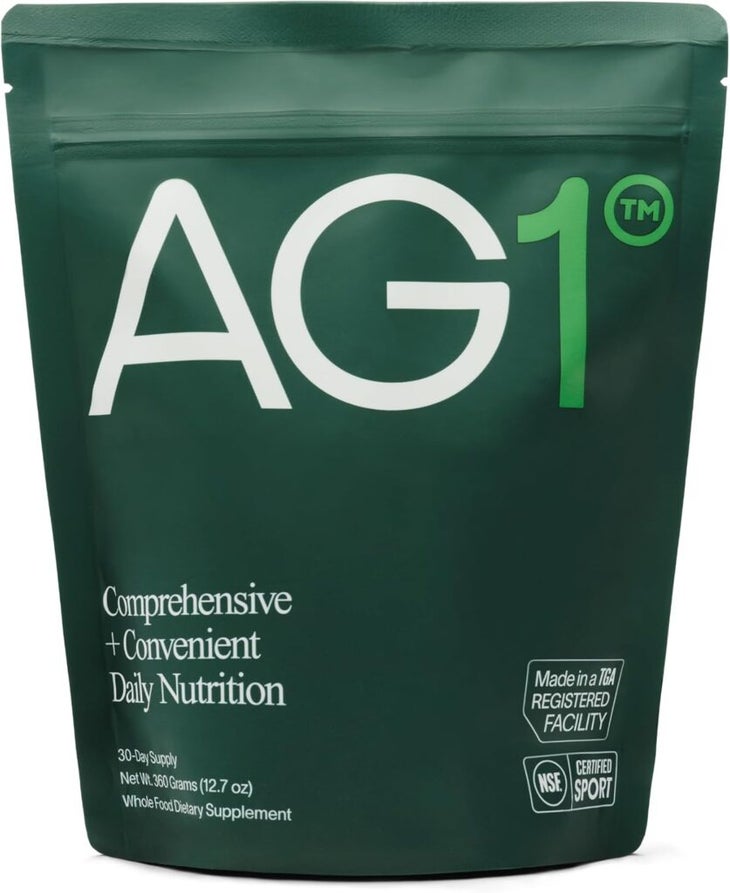
The only reason Alex Honnold is outperforming you might just be his consumption of AG1 Greens. “Basically every morning I just wake up and have my AG1,” Honnold recently remarked. “Like, I think it does do something.” While I’ve personally never tried it, the drink mix, loaded with superfoods, prebiotics, probiotics, vitamins, stress adaptogens, and more, is as intriguing as it is pricey (so save while you can).
10. DJI Osmo Tripod and Stabilizer (15% Off)
If you’re looking to level up your climbing content without springing for a DSLR or more expensive equipment, this handy gimbal is a fun way to do that. With a small tripod and modes that allow you to follow a subject or stabilize as you film, you can make the most of your phone camera. I’ve only used my DJI Osmo a few times, but it’s a breeze to use, makes it easier to film talking subjects, and is great for POV shots of a landscape.
11. DJI Neo Mini Drone (20% Off)
For the drone-curious, this mini model has over 1,136 five-star reviews and overall, a 4.5-star rating. It’s a great way to get bird’s eye footage of a climber or follow them up the wall. I’ve never used a drone before, but one reviewer wrote: “I’ve used this little drone for climbing and hiking trips three times now. I scrambled up Tryfan in Wales and it did an acceptable job of following me on some of the verticals [sic] sections.”
12. Petzl GriGri 3 (14% Off)

Not all grigris are on sale, but this gray one is 14% off right now. This assisted-braking belay device has stood the test of time with its smooth belaying and blocking features. Swap out your old one or add this to your belaying arsenal.
13. BG Belay Glasses (17% Off)
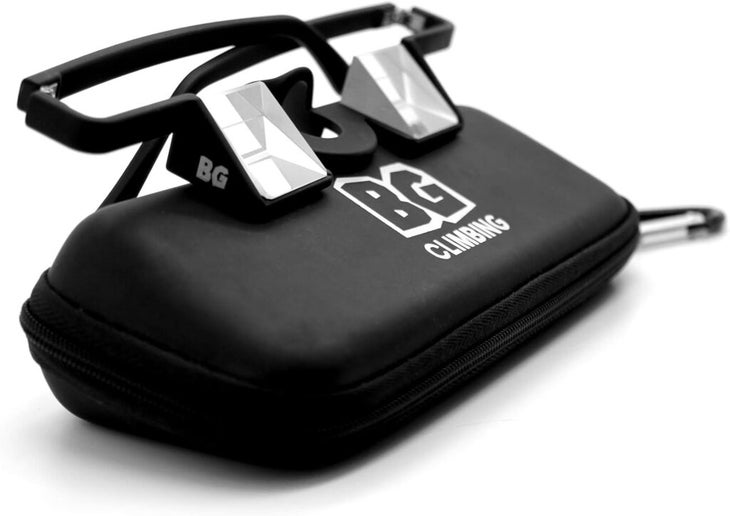
Love ’em or hate ’em, belay glasses protect your neck during long belay sessions. Whether you’re patiently supporting a partner on their project or spending the day in the gym, these belay glasses will come in handy (though note that we have not tested them in-house). Only the black colorway is on sale during Amazon Prime Days.
14. Power Guidance Hangboard (20% Off)
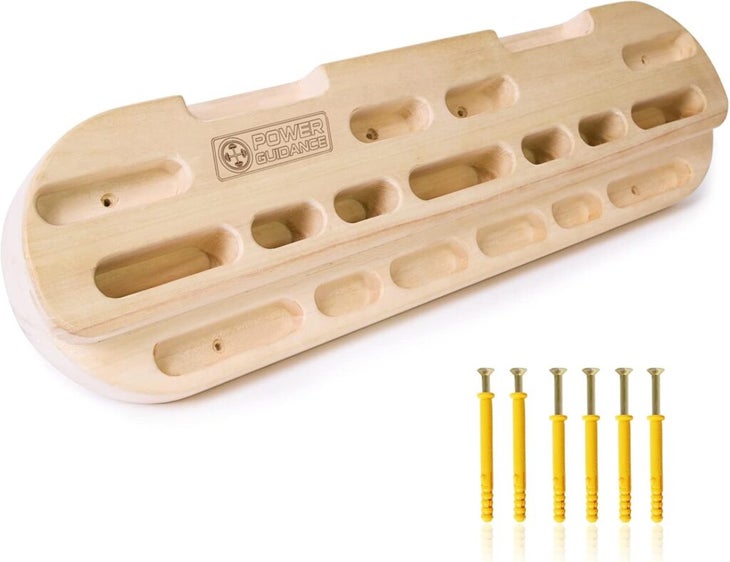
While we haven’t tested out this wooden hangboard, it appears to be a fine basic model with a standard array of grips. This 4.5-star hangboard has mostly positive reviews, including 34 5-star reviews. The hangboard is made by Power Guidance, a fitness gear company.
The post 14 Deals for Your Climbing Lifestyle at Amazon Prime Days (New Deals Added!) appeared first on Climbing.
]]>







